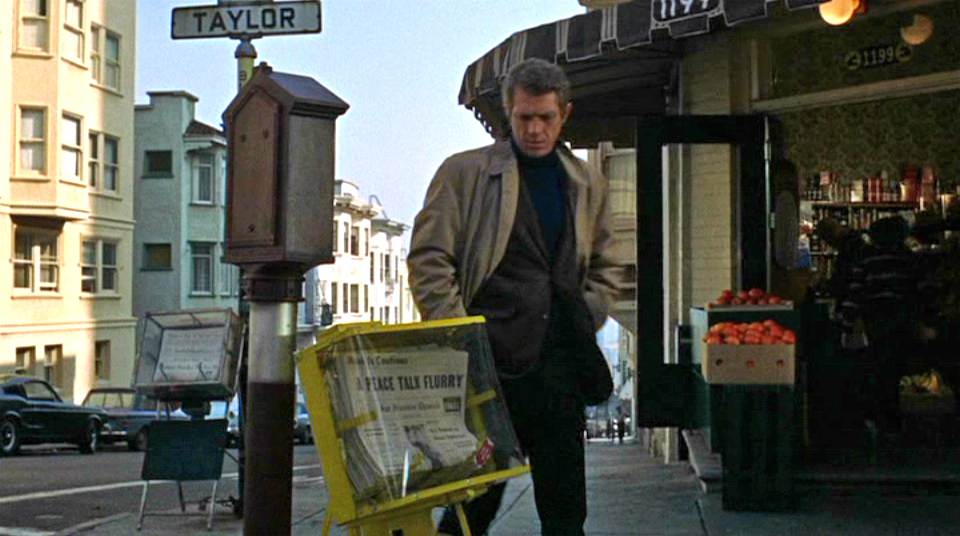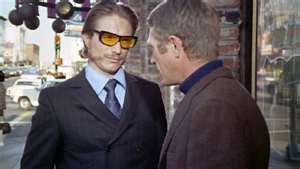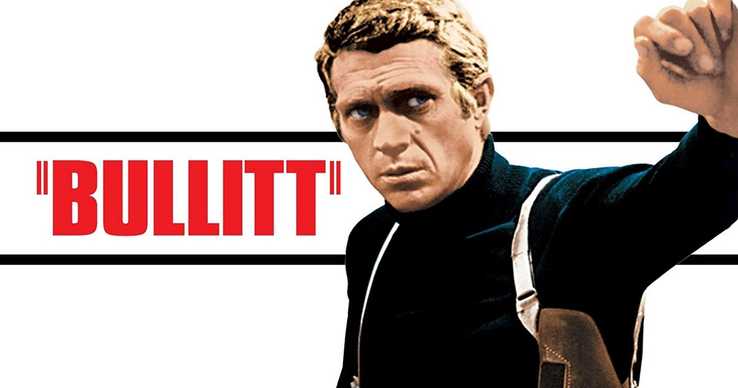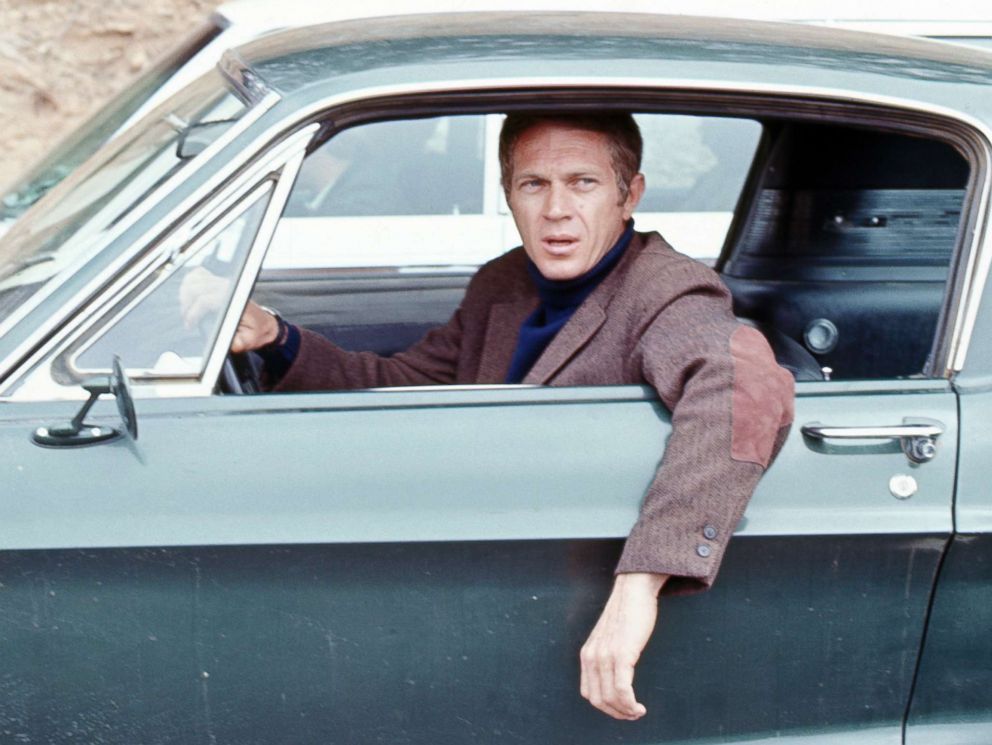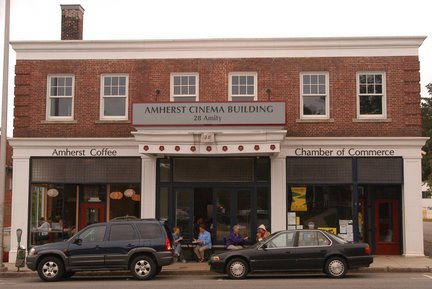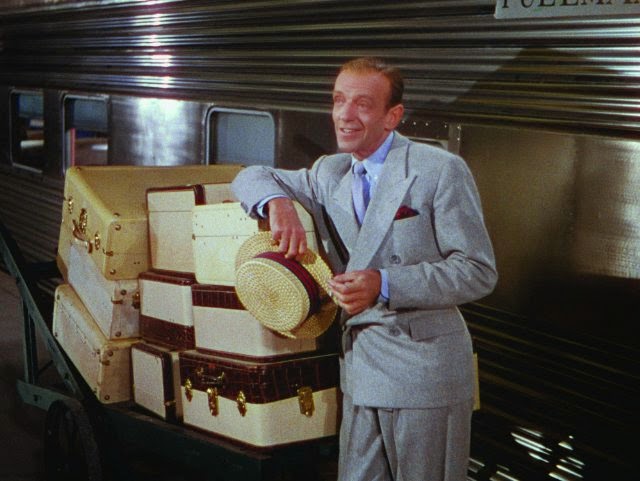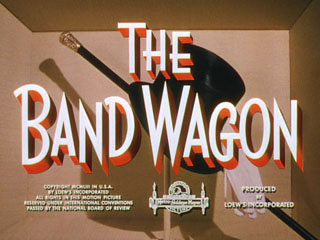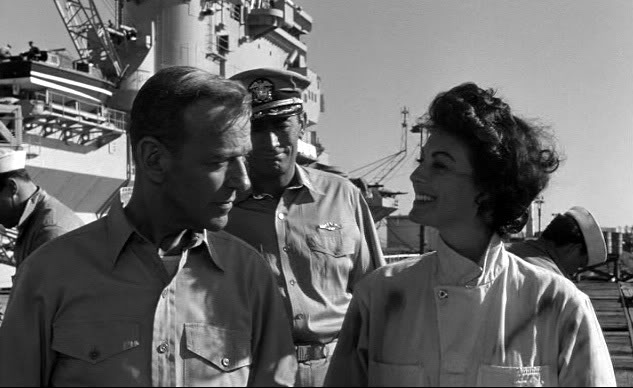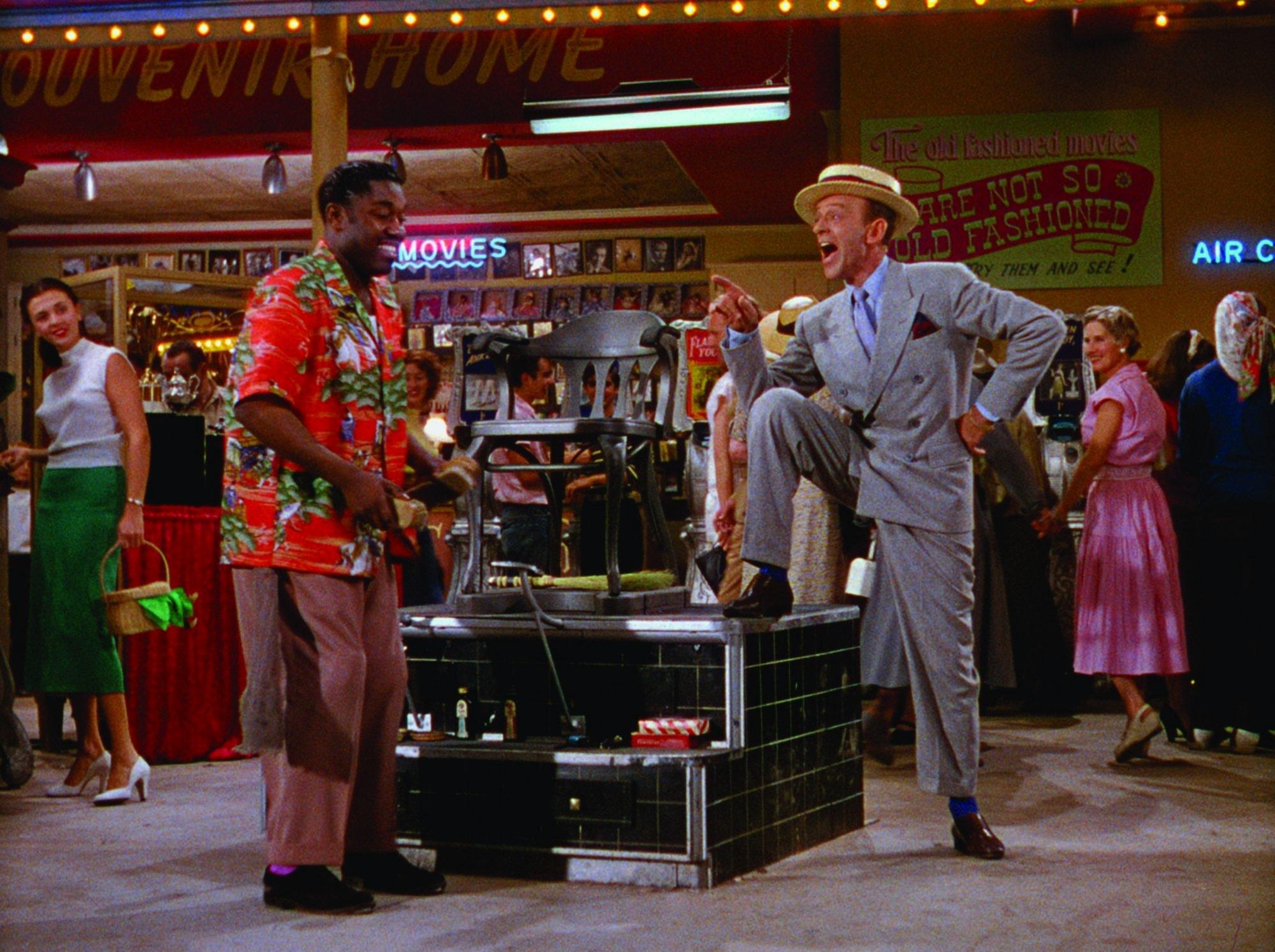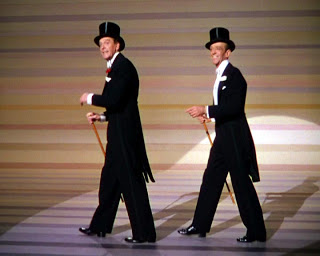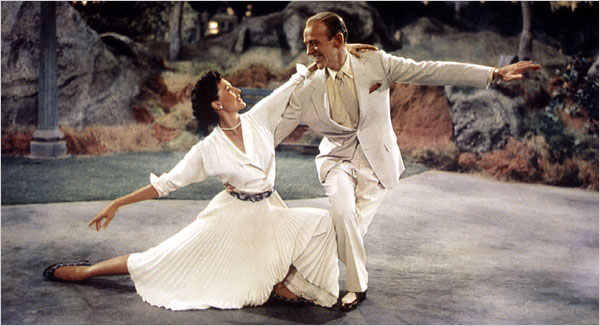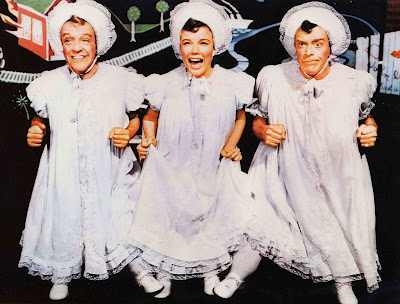As I’ve mentioned before, Disney+ for me has been less Mandalorian (though I have FINALLY started watching that) and more getting a chance to re-examine films I haven’t seen in years. YEARS. DECADES. So far, that’s included Snow White, Pinocchio, Fantasia, Bedknobs and Broomsticks, and most recently, The Great Mouse Detective. This past week, the revisiting tour continued with a film I think I may have only seen once in my life, this one;
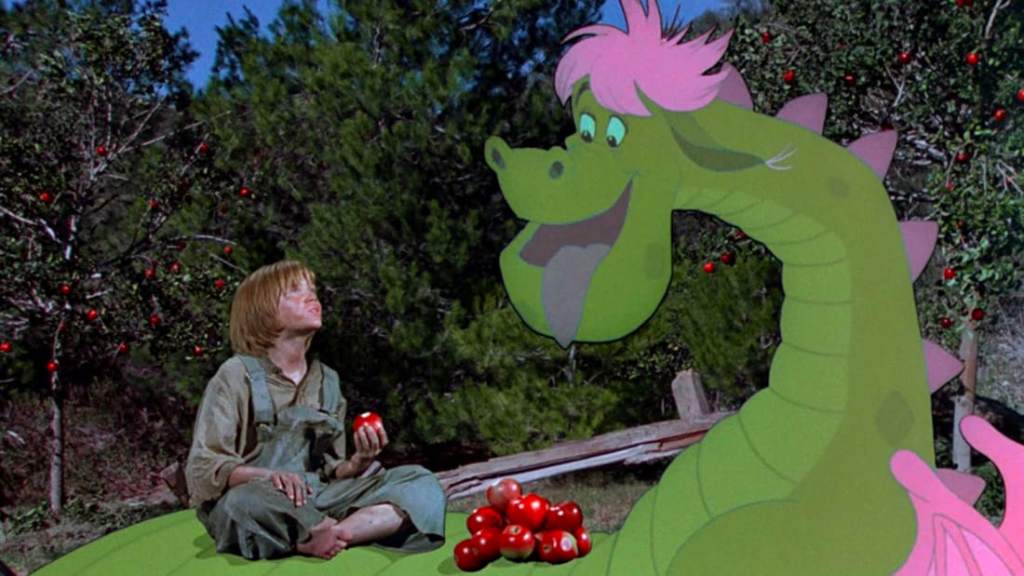
We’re talking the original, 1977 version of Pete’s Dragon. I’m 47 years old, and if you’re much younger than me, I suspect there’s a very good chance you’ve never seen this film. Hell, you may never have heard of it; only knowing its 2016, non-musical remake. I never saw that one. Come to think of it, I have no memory of seeing the original Pete’s Dragon all the way through either. I just remember the story: orphan run-away with animated dragon friend, taken in by lighthouse keeper in Maine; snake-oil salesman’s evil scheme; and a dramatic finish involving a near shipwreck and a long lost love. Perhaps I had seen pieces here and there. And I did remember some of the music; Mickey Rooney singing about seeing a dragon, the villain’s plan, and, of course, Helen Reddy’s big ballad. But perhaps I knew those from a record collection of Disney music I had as a kid. Truth is, the only solid memory I have of Pete’s Dragon as a kid was this:

That’s right, the float in the ol’ Main Street Electrical Parade at Disneyland. Growing up in California, I went to Disneyland usually twice a year, and that parade was a mainstay of most every childhood visit. I remember some kid would play Pete and ride his electrified pet dragon, Elliott. And you’d get Elliott’s weird babbling sounds. Clearly, I remembered more about the float than the movie itself. So, the question facing me, when I pulled up Pete’s Dragon on Disney +….does this film need to be remembered, or is it best left in the also-rans of the Disney oeuvre? The answer, as I found out, is not really clear-cut.
The noted movie critic and animation afficianado Leonard Maltin characterized Pete’s Dragon as Disney trying to recapture the magic of Mary Poppins, but finding it out of step with the times. I think that’s a pretty darn accurate description. In many ways, Pete’s Dragon follows the Mary Poppins playbook: live action, with interaction with animation; child in need of parental love; set-in the not-too distant past; original songs, and lots of choreography. All the elements of what made Poppins so perfect (and I absolutely need to write a blog about that masterpiece some day) are on hand in Pete’s Dragon….but it doesn’t QUITE work. I’ll say this up front, after watching Pete’s Dragon last week: it’s not a bad film. Parts of it are very enjoyable. But overall….I felt it came CLOSE to being great….but just didn’t make it. So, let’s look at what holds Pete’s Dragon back…and what it does well.
The first flaw that comes to mind with Pete’s Dragon is it’s length. It’s over 2 hours long. And I get it, Mary Poppins is a long film too. But everytime I think about how you could trim Mary Poppins down, I can’t come up with how you do it. Every song advances the storyline, every sequence means something. So you want to cut out the Tea Party on the Ceiling and Uncle Albert…..well, then how do you get the remarkable resolution of elder Mr. Dawes laughing and flying? And cut down the chimney sweeps dance, or the adventures in the animated chalk drawings? FORGET IT! Those are moments of incredible technical virtuosity, from the animators to the music of the Sherman Brothers and Irwin Kostal, to the talents of Dick Van Dyke and others. Or trim down Mr. Banks walking alone through the deserted streets of London, en route to being fired? NOT A CHANCE. That whole sequence, with the orchestra playing a haunting version of Feed the Birds, and the pause to where the bird lady would’ve been, that all works. We guess that Mr. Banks, alone with his thoughts, is having the seeds grow that will lead to his complete turn-around, when he is discharged at the Bank. Trust me, I’ve thought about it PLENTY. I don’t see how you cut down Mary Poppins‘ running time without negatively impacting what is such a PERFECT film.
The same does not hold true for Pete’s Dragon. The songs and dances are there, but in too many cases, they don’t seem essential to the story. Rather, they’re there because it’s following the Poppins playbook. Take this scene, for example. What’s happened is Lampy, the town drunk played by Mickey Rooney, has seen Elliot, and runs into the town bar to warn everyone. A song breaks out, about seeing a dragon. The rest of the barflies treat Lampy’s spiel like you would expect; the ramblings of a drunkard. Lampy’s daughter Nora, played by Helen Reddy, shows up to retrieve drunk ol’ Dad. And then the scene just goes ON. First off, we have some of the barflies being rough with Nora, something that’s pretty cringeworthy viewed now. Secondly, a wholesale big production dance breaks out, with stomping on the bar and kegs being popped open. It’s as if the writers thought, Mary Poppins had chimney sweeps dancing a production number on the London rooftops. How do we top that? I know, let’s go with drunks dancing on the bar and beer flowing like geysers! The concept is weird for a family film, and I’ll get to that in a bit. But the bigger problem is….why is this production happening? We just met Lampy one scene earlier, when he encounters Pete and Elliot. We haven’t been introduced to Nora; she entered during this song. And yet here we have this huge song and dance production, involving a bunch of saloon denizens. It’s so different than the Step in Time sequence in Mary Poppins. That one happens late in the film, we already know all the characters, and because of Chim-Chim-Cheree just 10 minutes earlier, we know all about chimney sweeps. If you want to say that scene goes on, I’ll disagree but I can listen to the complaint. The point is, Step in Time flows naturally out of the story. I Saw a Dragon worked just fine as Lampy trying to explain what he saw. But as a full-fledged production number, it just seems ridiculous. Who are these people, that they’ve earned the right to go extravaganza on us this early on? We don’t even know them!
Something similar happens when Nora takes Pete to school. The fishermen aren’t happy to see him because, since he came to town, all the catches have gone bad. Nora responds with the lovely There’s Room for Everyone in the World. It’s a nice song with a great sentiment. But what happens is, again, it becomes a full song and dance production number with a huge cast. Here’s the scene. I guess you can justify in that, with all the school children joining in, it shows that Nora’s message of acceptance is working. I can buy that. But for me….the scene is just kind of….blah. The song is nice….but not great. Not to keep comparing to Mary Poppins, but here’s the thing: the production numbers in Poppins are SOMETHING. They blow you away in their quality, and they always advance the story. Spoonful of Sugar, with the magic of the nursery cleaning itself? AMAZING! Jolly Holiday, be it just Bert and Mary, barnyard animals, or penguins? Maybe the greatest work done in Walt Disney’s lifetime (and that’s not hyperbole; someday I am going to write about how that sequence is the culmination of his career). So if Jolly Holiday goes on, SO WHAT?! You’re watching magic happen. Dick Van Dyke dancing with penguins, for crying out loud! But when a bunch of Maine school kids dance around, it just doesn’t feel that special. Maybe because it’s just…..ordinary. Sure, it looks great, but its not unique. We’ve seen big dance production numbers from lots of movies; its not Disney exclusive. Though I will say, the creation of the fictional Maine town of Passamaquoddy is impressive to look at. So if There’s Room for Everyone ‘s spectacle is an excuse to show that off, I guess I can allow it. But if the complaint is that Pete’s Dragon is just too long, which I think it is, these are two examples where you could easily make up time. And I’ve got more example than that coming!

One of the things that sort of stands out in the Disney films of the 1970s and ’80s is how dark they could get. I wrote about how, in 1986’s The Great Mouse Detective, we have heavy drinking and a mouse being fed to a cat, yet its treated so ridiculously, it doesn’t really bother you. Pete’s Dragon comes 10 years earlier, but its sort of the same idea: present something dark but so ridiculous, it doesn’t disrupt the merriment. There is a LOT of drinking in Pete’s Dragon. I’ve already talked about the beer a-flowing in I Saw A Dragon. The character of Lampy is nearly always drunk; we never get any reason why. There’s a never backstory, of something dark in his past that has turned Lampy into a lush. He’s just (nearly) ALWAYS drunk. Its played as a joke….like, hey kids, let’s have a laugh at Grandpa Drunky! I get that was Dean Martin’s shtick for so many years….but I also don’t recall Dean Martin being in a Disney film.
The constant alcohol use is not just the propriety of Lampy. We have a scene where two of the villains, Dr. Terminus (more on him shortly!) and his sidekick Hoagy, are consoling themselves in the saloon, with a bottle of whiskey to share. The so-called doctor doesn’t seem too much of a drunkard, though he does throw a few glasses down. But Hoagy, he’s right there with Lampy. And no wonder they hit it off so well. Heck, Hoagy carries a flask with him that even he later shares with Elliot! Lampy is played by the famous Mickey Rooney, and he just goes over the top with the imbibing shtick. It’s cheesy and makes me wonder how it got into a Disney film. But then again, you bring in Mickey Rooney and subtlety is not on the menu. And no…I’m not going to share ANY clips of him from Breakfast at Tiffany’s; you’re on your own there. But when director Don Chaffey put a drunk Lampy and a drunk Hoagy together, to go find Elliot…..now you had inebriated comedy that actually worked. It helps when Hoagy is played by veteran showman Red Buttons. Everyone in Pete’s Dragon hams it up, and Buttons, as the sidekick to number 1 villain Doctor Terminus is no exception. Yet for some reason or other, I found his drunk act amusing. Maybe because it’s not all he does in the film. The same cannot be said Rooney, whose Pete’s Dragon is ALMOST a one drink, err one trick pony. Anyway, here’s a scene where the two drunks go dragon-hunting. These are two actors from a previous generation, where slapstick was a thing….and it shows. It really plays like a Vaudeville routine, and I think is one of the more underrated moments in Pete’s Dragon.
But Buttons and Rooney weren’t the only stars of a previous era to make an appearance in Pete’s Dragon. The opening scene introduces us to Pete (and Elliot) running away from the Gogans, a really unattractive hillbilly family that purchased him to work their farm. The Gogans are crude, ugly and evil. And they’re led by Ma Gogan, played by another Oscar winner from decades before, Shelley Winters. Just like everyone else in Pete’s Dragon, she goes to town in terms of over-acting. My guess is, with her years as a sex symbol gone, Winters said, What the Hell, and decided to go all-out cheesy. And the way the film begins, it’s another example of Disney presenting the dark so ridiculous, you don’t really notice how dreary it is. The song is The Happiest Home in the Hills, and I really don’t know how to describe it. Here you go, have at it. I have no memory of what I thought as a kid. Was I scared? Watching this scene last week, me now being 47 years old, I had no idea what to think. The two boys are singing of all the horrific things they’ll do to Pete; everyone is dancing and singing while brandishing weapons. I know its supposed to be ridiculous, but as I watched it, I was just struck by how morbid a tone was being struck. And it’s like I wrote about the Ratigan song in The Great Mouse Detective; when you turn the villain’s song into something cheery, just as this is, it lightens the scene. Still….this is the opening moment of Pete’s Dragon. Everything is dark, dreary and grimy. You’re definitely not in Mary Poppins!
There are two acting performances in Pete’s Dragon that really added something to the film. One was Helen Reddy as Nora. If you want compare to Mary Poppins, she’s the Julie Andrews….and if that’s the bar, Reddy comes out very well, despite how high that bar is. She had already had her major hit with I Am Woman (Hear Me Roar). In some ways, the comparison to Andrews is apt, as she was just coming off starring on Broadway in both My Fair Lady and Camelot, but had not made a movie yet. I THINK (not positive on this) Pete’s Dragon was Reddy’s first film and I have to say, I am quite surprised she didn’t have more of an acting career. Take a look at this scene, one of her first with Peter. She’s naturally comfortable, and this happens in scenes beyond ones that involve singing. In perhaps the only scene in the movie where Lampy is NOT drunk, they argue about Nora not letting go of her assumed dead fiancee. Likewise, there’s a very good exchange later on, where Nora advises Pete to forget about Elliot (whom she assumes is an imaginary friend) just as she needs to give up on Paul (her long lost fiancee).
Now, calm down; no, I’m not about to say that Helen Reddy was better than Julie Andrews. But hear me out here. Mary Poppins, as we all know, is, (say it with me) “Practically perfect in every way.” Or as Michael Banks put it, “Rosy cheeks and everything!” Mary Poppins came out in 1964, Pete’s Dragon in 1977. In the years in between, there was the war in Vietnam, the Civil Rights movement, rioting, the assassinations of Martin Luther King Jr and Robert F Kennedy, the violence at the 1968 Democratic National Convention, and Watergate. America had seen a LOT between the releases of Poppins and Pete. And I think Pete’s Dragon reflected that. I mentioned how it has darker elements than Poppins, from the Gogans to all the drinking. And the same goes for the female lead. Nora is big hearted, just like Mary. But she’s dealt with heart-break and loss. Her life hasn’t been easy. She’s also not magic, like Mary Poppins. She’s earthy, she’s gritty. And she’s played by the woman who sang I Am Woman (Hear Me Roar). She’s a Mary Poppins, updated for the time. And Helen Reddy was great in it. Again, how she didn’t become a bigger movie star after this, I don’t know. I’m not going to say she was better than Julie Andrews. What I will say is, its one of the finest performances by a female lead in a live-action Disney film. Its not even fair to compare to Andrews, because the roles call for something so different. Poppins: magic. Nora: grit. But both played with a whole lot of heart. Put me down as an audience member, impressed by both. Is that fair?
Pete’s songwriters, Al Kasha and Joel Hirschhorn, gave Reddy a big ballad, with which to bring down the house, Candle on the Water. It’s definitely a creation of its time; I could hear Carly Simon singing it. It’s set up for Reddy to knock it out of the park, and while she does just that vocal-wise……and lackluster is director Don Chaffey’s filming of it! It’s just Reddy on the top of her lighthouse. That’s it! So much more could’ve been done with this. Nifty camerawork and special effects, stretching from near and far, over different landscapes. Instead, it’s so….static. This really should’ve been a much more grand moment. Take a look for yourself.
Sean Marshall, as the title character, is sort of….ehh for me. He has the whole cute kid thing going for him. The problem is, personally, I find the characterization the exact opposite of Helen Reddy. He’s just too sweet. This is a kid who is an orphan and has been purchased by a family of brutes to basically be their slave. Yet, he is unfailingly optimistic and full of cheer. Yes I know, he has a pet dragon who’s looking out for him; that would cheer me up too. But I guess my thinking here is, this is a movie which shows plenty of darkness: abusive, exploitative foster home, and then heavy drinking amongst adults. It doesn’t mean Pete needs to be suicidal. But look back to the scene I posted, where Nora and Pete have their first song together (It’s Not Easy). Pete is so sweet-natured and takes to Nora instantly. Wouldn’t you think that a boy who has been through so much might just be a little guarded, especially around adults? Now of course, Nora isn’t the monster that Ma Goggins is, BUT STILL. I would think Pete would be just a bit shell-shocked and withdrawn around adults by this point. But nope, he takes to Nora like a cat to cream. It’s as if director Don Chaffey decided, there’s enough darkness, let’s make the kid as bright as can be. We’re going to make him as Disney as possible.
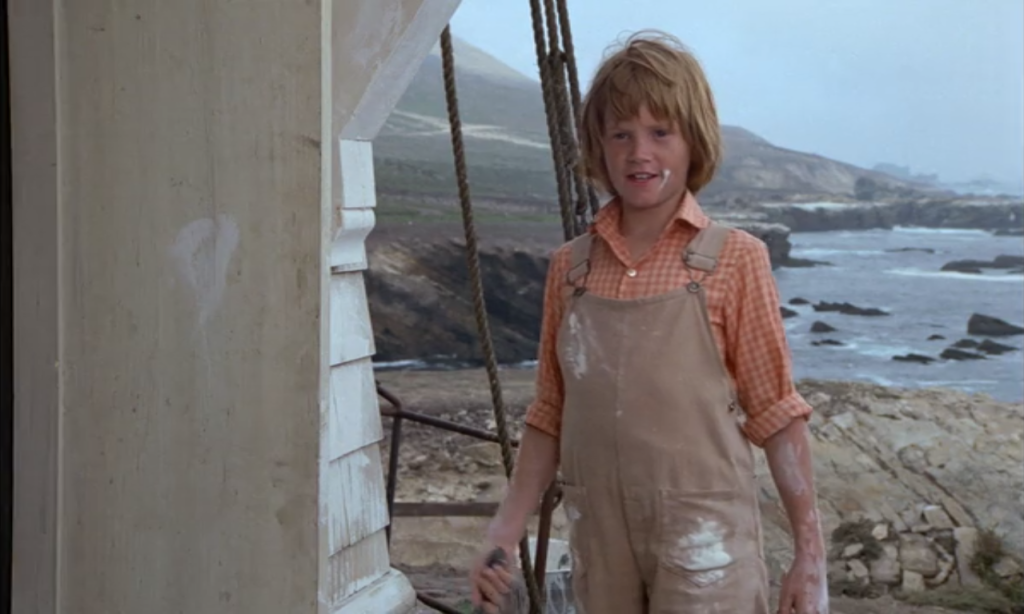
Who knows, maybe child actor Sean Marshall just didn’t have the range to play Pete with depth. Maybe that was the case. Look. he’s fine. He’s cute, he’s wholesome, he’s likable. But for being the title character, to me, Pete just isn’t memorable. He’s kind of the vehicle that the story centers on…..but those that are orbiting that center are just more interesting. That’s the case with Helen Reddy as Nora. It’s the case with Red Buttons as Hoagy. I wouldn’t say Ma Goggins is an interesting character but Shelley Winters clearly was having a ball playing her. And even though there’s no depth, no interesting backstory to his character, Mickey Rooney’s Lampy at least is entertaining. That is, if jolly alcoholics is your brand of humor. Somewhere Barney Gumble approves. And there is one more character I haven’t really talked about too much, who is most DEFINITELY interesting. And that character, for me, is, far and away, the best element of Pete’s Dragon.
I’m talking about Jim Dale as the primary villain, Doctor Terminus.
I mentioned how I don’t remember much about Pete’s Dragon from childhood. Well, I did remember Dr. Terminus. And how could you not?! Just look at Jim Dale in that picture: top hat, goatee, ascot tie, scarlet waist coat, cape and kid gloves. Mickey Rooney and Shelley Winters may have chewed on their scenes but that was NOTHING compared to what Jim Dale did. But you know what? It works BEAUTIFULLY. “Dr.” Terminus is a quack artist. He comes to town peddling all kinds of dubious medical treatments, and it turns out he’s been to Passamaquoddy before. He travels by a sail wagon because as he mentions, he lost his horses to settle a malpractice suit! I have no doubt in my mind at all that Jim Dale was channelling The Music Man’s Prof. Harold Hill for the role. And why not? Both were con men, preying on small town early 20th century America. Dale was a stage performer in England, and not long after Pete’s Dragon, won a Tony for his portrayal of P.T. Barnum in the Broadway musical Barnum. You have to think that show’s producers were inspired to choose Dale after seeing Pete’s Dragon. Here’s Dr. Terminus’ debut number; you tell me if this isn’t the successor to Ya Got Trouble?
I really hesitate to say Jim Dale overacts. He is a lightning bolt of energy that just dominates the screen. And there is such total commitment to the role; his facial expressions are deliciously wicked, his voice so silky smooth, his mannerisms all with a purpose. This character works so well. Shelley Winters: okay, I’m going to play a dirty mean, old lady and have fun with it. That she does….but how much screen time do you want of a dirty, mean old lady? Mickey Rooney: I’ll be the lovable town drunk and have fun with it. And it’s fun….till that joke gets old. Meanwhile, Jim Dale….whereas Robert Preston bellowed his way into River City, I’m going slime my way into Passama….whatever the town is called, and charm the local residents out of their cash. And you, gentle viewer, won’t be able to look away. It’s a total commitment to a role that is completely one -dimensional and shallow. There’s no backstory on Dr. Terminus, there’s no redeeming grace. He’s an unapologetic sham and Jim Dale milks everything out of it, and then some!
To put into perspective how much Jim Dale dominates the film, Dr. Terminus doesn’t arrive till about 45 minutes in….and all of sudden, everything shifts into high gear. Everything had been uneven till that part: Pete escapes from the Gogans and their song and dance, he and Elliot have a VERY forgettable number together, Pete comes to town and mischief ensues, we have Lampy and the saloon dance, and then Pete is taken in by Nora. Nice film, nothing special. But then the good Doctor blows into town, and from that point on, friends, I could’t look away. Every scene he was in became must-watch. This movie, which had been taking its time, like a pleasant, uneventful stroll, suddenly became a sprint through a minefield. Everything is exciting and its all from what Jim Dale brought to the role. If he wasn’t as enthusiastic in his delivery, the film falls flat. Dr. Terminus isn’t a menacing villain. He’s not going to hurt Pete, Nora or Lampy. And his scheme is so simple. He doesn’t want to capture Elliot to show him off, like King Kong. No, it’s about chopping a dragon to peddle more “cures.” The whole villain scheme is that simple. Yet it works because Dale is just so delicious in every scene. There’s a great moment when he comes to the lighthouse to recruit Pete . Nora doesn’t approve and he just shuts her down, “Paint your lighthouse, Nora.” It’s sexist, its misogynistic, and it should be noted, he’s saying this to the woman who sang I am Woman (Hear Me Roar). We should hate him for it, especially with the zeal Dale delivers the line. Again, it’s such a commitment to the role.
Dr. Terminus only gets two songs and both are tour de forces. You already saw his introduction. For my money, Terminus’ second number is the best song in the entire film. It’s where he’s just discovered how many cures he can make from a dragon. Again, the concept is so silly; no, I’m not afraid of a fire breathing dragon. All I want is to use him to increase my business. I don’t want to overthink this, but isn’t it interesting how the villains in Pete’s Dragon are all scheming for business gain? When the Gogans come to claim Pete, they sing about how they have a Bill of Sale. And Dr. Terminus and Hoagy’s shining moment is a song extolling all the money they’ll make. Nora and Lampy take Pete in for love, while the villains are out for financial gain. A commentary by Don Chaffey in 1977? Hmmm?
Anyway, I’ve said how some of the musical moments in Pete’s Dragon go on too long by becoming spectacle. That’s not the case with Every Little Piece. You’ve got two professional song and dance men in Jim Dale and Red Buttons; let them go! And boy, did they deliver. Take a look. And when you do, look at the facial expressions from both of them, especially Dale. His gestures, too! And that diabolical laugh. Not to mention the dance routine. This is the exact opposite of I Saw a Dragon. We know who these two characters are, and their giddy dance is all part of the story; it’s their glee at the nefarious plot being hatched. Not to mention, Dale and Buttons are just sooooo good. Did you see near the end, where Dale tosses his cane to Buttons, who tosses it right back? It’s consummate showmanship. Every little thing Jim Dale does in Pete’s Dragon is worth watching. He is, without a doubt in my mind, the best part of the film, and quite possibly the greatest Disney performance you probably don’t remember. What a pity!
There are two more things I’d like to discuss about Pete’s Dragon. One is the music. Unlike Mary Poppins, the typical Disney songwriting team of the Sherman Brothers was not on hand, Instead, the honors went to Al Kasha and Joel Hirschhorn, who were hot at the time. They had apparently had the market cornered for songs from disasters pics, with Oscar-nominated tunes from The Poseidon Adventure and The Towering Inferno. Their work on Pete’s Dragon is, to me, hit and miss. Candle in the Wind is the big anthem; Nora and Pete’s duet of It’s Not Easy really quite lovely, and I’ve waxed on about the two numbers for Dr. Terminus. They also have a big, happy anthem in Brazzle-Dazzle Day. On the other end are Pete and Elliot’s duet, which I might go so far as to call the cheesiest, most forgettable song in any Disney film EVER. I know that’s a strong statement but judge for yourself. When I watched it last week, I almost hit the fast-forward button. See what I mean about Sean Marshall just being too cute? This one, like Marshall himself, is too sweet, enough to make one sick.
My biggest problem with the songs to Pete’s Dragon is that they tend to sound like when they were composed: the mid 1970s. Here’s the thing about the Sherman Brothers and Mary Poppins. The movie came out in 1964 and is set in 1910. The songs aren’t really imitations of Gilbert and Sullivan or contemporary English styles; there’s just a timeless, undated sound to them. They’re neither 1964 or 1910….they just exist on their own. And that’s why they work so well still today. Seth MacFarlane (yes, THAT Seth MacFarlane) opined a few years back how the current trend in Broadway shows doesn’t really give a long life to the tunes, since they’re written in current styles. Here’s the article, if you’d like to read it. MacFarlane talks about how a show like Brigadoon has a timeless quality, because the music isn’t wedded to a particular popular style.
Just before I watched Pete’s Dragon, I also watched The Greatest Showman, the movie musical about P.T. Barnum. Wonderfully filmed, beautiful to look at, colorfully staged….a whole lot of fun. But what didn’t work for me was the music. Something about people from the 1840s singing in current styles just seemed off. This doesn’t bother me with Hamilton because from the get-go, you know this is a unique take on history. Thomas Jefferson played by a black man, for starters! So, when Alexander Hamilton raps, it doesn’t seem out of place. But when figures such as P.T. Barnum and Jenny Lind are in their contemporary setting, in their contemporary clothing, singing in modern styles, it just seems off-putting. That’s what I feel about much of Pete’s Dragon. Songs like Brazzle-Dazzle Day, It’s Not Easy and Candle on the Water are really nice…..but the sounds of soft rock 1970s in early 20th century Maine just didn’t mesh. And that’s another reason the Dr. Terminus numbers absolutely DO work. I don’t know if Kasha and Hirschhorn set out to make Every Little Piece sound like a show tune from the first decade of the 20th century. But what they did create was what the Shermans did with Mary Poppins; that tune has an undated feel to it. It seems completely in place in early 1900s Maine. With the exception of the Elliot/Pete duet, the songs of Pete’s Dragon are not bad. Occasionally they’re terrific. But they don’t work together as a unified whole like the Shermans’ do in Mary Poppins. There’s too much variety in styles…..especially when the styles don’t fit with the setting.
It probably sounds like I didn’t like Pete”s Dragon. That’s not the case. There is much of it I liked, and more than just Jim Dale and Red Buttons. Helen Reddy, as I mentioned, was terrific. What also was terrific, and may have been an improvement over Mary Poppins is the filming. Sure, I criticized the staging of Candle on the Water. But let’s look back at Poppins. Everything was on a sound stage. Nothing was shot outside, nothing natural. Pete’s Dragon is a BEAUTIFUL film to look at…..well, when we’re not looking at the ugly Gogans, that is! The recreation of the Maine waterfront is so picturesque. I’ve been to Maine beach towns plenty; Disney really got the New England feel right. It was all shot in Southern California, but I thought the recreation was perfect.

Another part of the production that I think anyone who saw Pete’s Dragon remembers is the Lighthouse. To my great surprise, that was not a pre-existing structure! Disney had it built and installed near Los Osos, California. It’s no longer there. I can’t imagine the cost and this wasn’t at at time when the studio was rolling in cash, either. And while the lighthouse didn’t add too much to Candle in the Wind, Don Chaffey made up for that with Brazzle-Dazzle Day. Here is another example of justifying the full-blown production. Its a happy buoyant song, coming in the film right after Nora and Lampy tell Pete they’d like him to live with them. Spirits are high; the moment calls for extended celebration. And while the song, yes, is out of place in early 20th century Maine, the sentiment is fitting. Chaffey makes the most of this sequence with all kinds of long range shots that just emphasize the majesty of the setting. It’s a lighthouse on a cliff, better make the most of it, and Chaffey did! It’s everything Candle on the Water was lacking. Yeah, the butt rub of the glass is weird…..but just go with it. It’s a delightful scene, and in this regard, if it doesn’t top Poppins, it at least matches it. What Mary Poppins brings in animated and sound stage magic, Pete’s Dragon matches with outdoor, aerial shots that showcase the natural beauty. Sure, that’s the Central Coast of California, not really Maine….but I don’t care. Is Mary Poppins‘ sound stage 17 Cherry Tree Lane really Edwardian London? It doesn’t matter; what it was was magic. Just as the California recreation of Maine works for Pete. At times, it’s a beautiful movie to behold.
Oh, one more thing about the Pete’s Dragon Lighthouse. I don’t remember much, if anything, about the film from viewing as a kid. But what I do remember is that in the climatic scene, Nora’s long lost fiancee is returning on a ship to Passamaquoddy, but a storm has extinguished the Lighthouse. It’s predictable what’s going to happen…..and damn, if I didn’t find the whole sequence really gripping. Watched just a week ago, at age 47, it’s still suspenseful. Really great bit of tension that just makes for an even better resolution to the film: the Gogans have been dispatched, Dr. Terminus has been foiled, but there’s one more obstacle to Nora being reunited with her love, and only Elliot can save the day. It’s also a nice touch that Nora, while completely sympathetic to Pete, never believed Elliot was real. And in saving her fiancee, she gets to meet the dragon. The whole sequence really draws you in and makes for a wholly satisfying wrap-up.
Well, I guess that about does it. I’ve discussed the music, the characters, the setting, the pacing, the acting. Anything I missed? Oh, how silly of me…..just this guy!
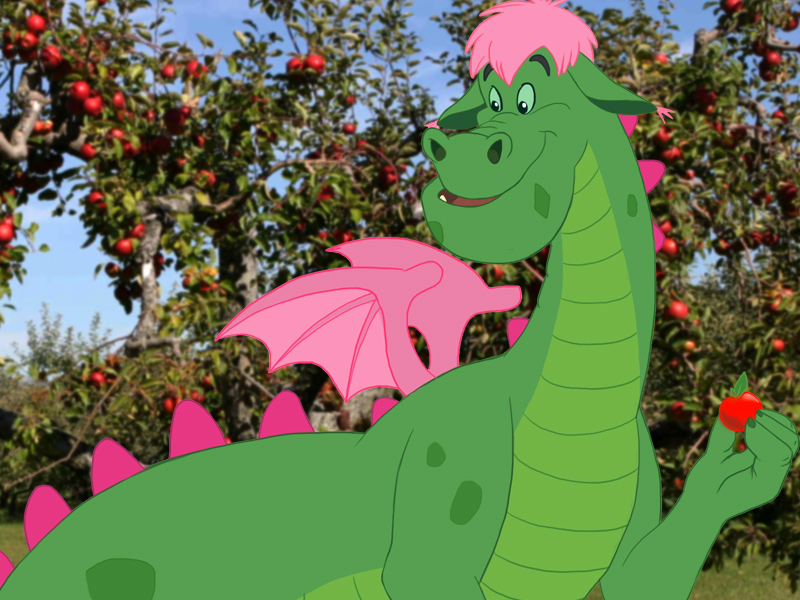
There’s an awful lot Disney did really well with Elliot. It probably starts with just how he’s drawn. He’s funny. There’s nothing terrifying about him at all. Him flying with those little wings, and his human like face are such a fun touch. My understanding is, in the remake, the dragon is CGI and more realistic. I get that, in the era of Game of Thrones. But in a film where Pete is escaping really grim circumstances (the Gogans) having the equivalent of a cartoon dog for the dragon ABSOLUTELY works. I also think Chaffey and his writers make a great choice in keeping Elliot invisible to most everyone else. We saw the wreckage he causes in Passmaquoddy (never out of ill will) and there’s the great visual of his outline framed in the ruined wall of the school house. But the only people who have seen Elliot besides Pete are Lampy and Hoagy….and both were drunk at the time! Even when Dr. Terminus captures Elliot with a net, we still don’t see him. We only see a dragon shape filling out the net…but no Elliot. Only when the plots have been foiled do the ordinary see Elliot, such as when Dr. Terminus is hanging from the pole, or when Elliot saves the Mayor and his committee. Great choice from the team of limiting how many people Elliot is visible to.
Another great choice was making Elliot a truly friendly dragon. Think about all the times we see him breathe fire: to roast an apple for Peter, and to incinerate the Bill of Sale the Gogans have to Pete. That’s it. Outside of knocking someone over, we never see Elliot attack a person. Heck, he knocks Dr. Terminus’ “medicine” wagon into the harbor, he doesn’t burn it up. In fact, Pete‘s Dragon is one of the very few Disney films where no one dies. Think of all the movies from 90s on? The Little Mermaid, Beauty in the Beast, The Lion King, Mulan, Tarzan, The Hunchback of Notre Dame….all the villains met their doom. But not so in Pete’s Dragon. Once the Gogans lose any evidence of owning Pete, they simply fall into tar, just like they fell into mud in the movie’s opening. We assume they just went home and continued to be awful people. Perhaps the townspeople run Dr. Terminus and Hoagy out of town on a rail….but they definitely aren’t killed. It’s actually quite refreshing that, for a movie that could be dark at times, the ending is so light.
I don’t mind that Elliott speaks in noises and Pete can understand him. If you have a problem with that, then I would like to know how you get around Han Solo communicating with Chewbacca. The one thing I wish we had a little more info on is how Elliot and Pete came together. Pete says something to Nora about how Elliot comes to help orphans in need. And then, right near the end, when it’s clear everyone has a happy ending, Elliot tells Pete he has to go now, as Pete no longer needs him. I know….I already said the movie is too long. But perhaps if you cut out some of the production numbers or I know….replace the silly duet with a song that explains how Elliot first came to Pete, that would solve it. Admittedly, it’s a minor gripe, but the notion of a dragon that came to the rescue of orphans, what an interesting concept. Anyone else interested in learning more?
So, the original Pete‘s Dragon, what to make of you? At your best moments, you’re a fun story that (after a while) drawn you in. You’re beautifully shot, whether on an artificial set or in nature. Your songs are hit and miss; the best ones are memorable (if somewhat out of place), but they have a tendency to go on too long. Not every song deserves a production. And you have actors who REALLY loved the camera. In the case of Jim Dale and Red Buttons, that’s an incredible plus going for the film. In the case of Mickey Rooney and Shelley Winters, a mixed bag. And in Helen Reddy, you have the most worthy successor to Julie Andrews possible. If Mary Poppins is innocence and optimism, Nora is world-weary yet still full of love. It’s a natural evolution, and Helen Reddy played it PERFECTLY. And I think that sums up Pete‘s Dragon pretty well too, if I say so myself. When it’s following the Mary Poppins playbook, it’s a poor successor: Candle on the Water is no Feed the Birds. Mickey Rooney is not Dick Van Dyke. Drunks on a bar are not chimney sweeps on London rooftops. But when Pete’s Dragon went its own way, it fared more than decently. Mary Poppins had no true villain; Dr. Terminus is the best villain in any Disney live action film I am aware of. And like Van Dyke, any moment Jim Dale is on the screen, you have to watch. Mary Poppins is on a soundstage; Pete’s Dragon gives us a recreation of early 1900s Maine, complete with a lighthouse. And maybe most interesting, in Mary Poppins, our characters jumped into the animation. Pete’s Dragon brought the cartoons into the real world.
Mary Poppins‘ supremacy as the greatest film of Walt Disney’s career is not threatened by Pete’s Dragon. In fact, it’s not even eligible, since Pete’s Dragon came a decade after Disney’s death. And when compared as a Poppins clone, Pete’s Dragon suffers. But when viewed on its own, without the comparison, it works. Sure, its too long. Sure, not all the songs are great. Sure, it could use some judicious cutting. And really, Mary Poppins is such a high bar to compare to. I know I’m biased, but I don’t find anything I’d change with that film. I can’t say the same about Pete’s Dragon…..but that doesn’t mean I didn’t like it. It’s a good film. I enjoyed it. Just because you may not be practically perfect in every way, doesn’t mean you can’t be brazzle-dazzle!
Check it out on Disney + and let me know what you think. While it’s not a masterpiece, it’s still worth your time. Or at least an hour and 45. And why that particular amount, you might ask? Because I figure after trimming enough of Pete’s Dragon to get to that running time, now you’ve got something!
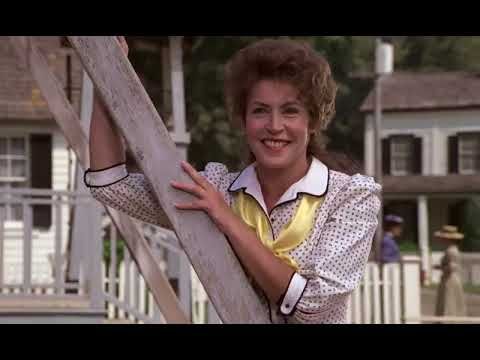


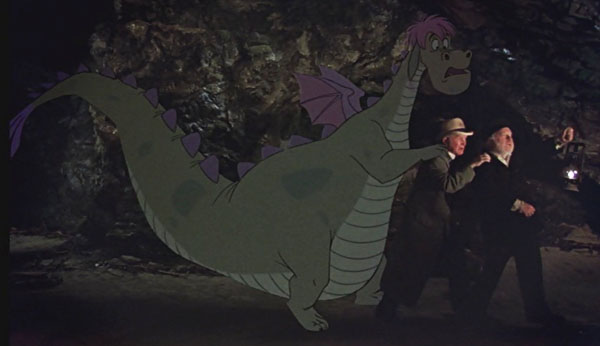

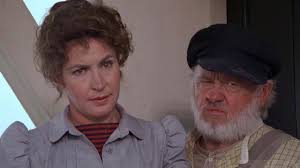
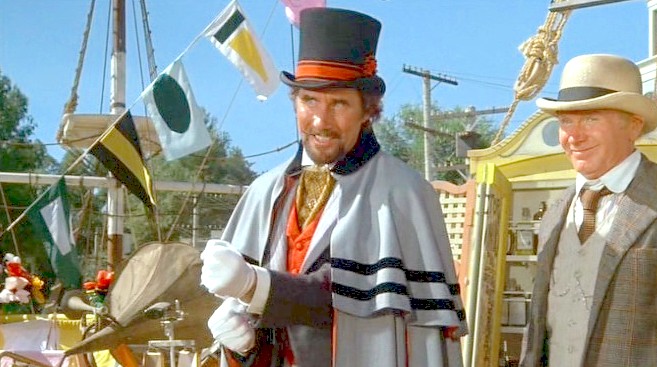
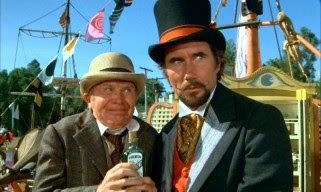


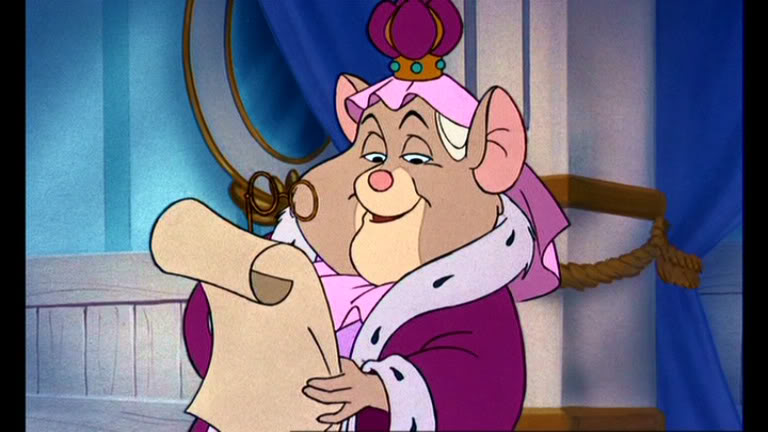
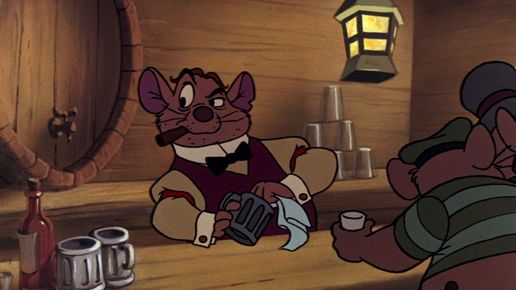
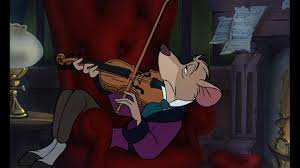
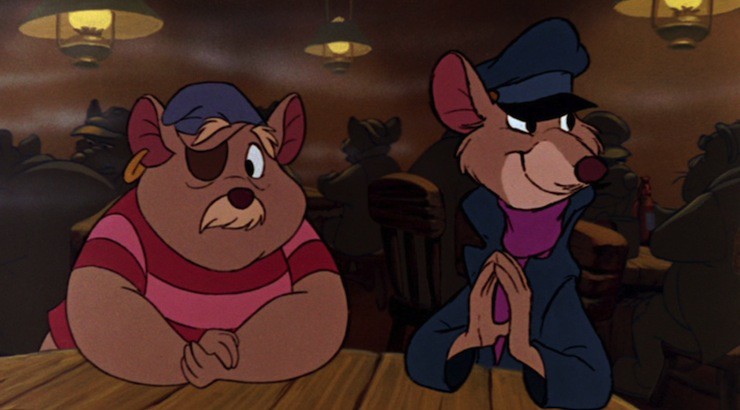
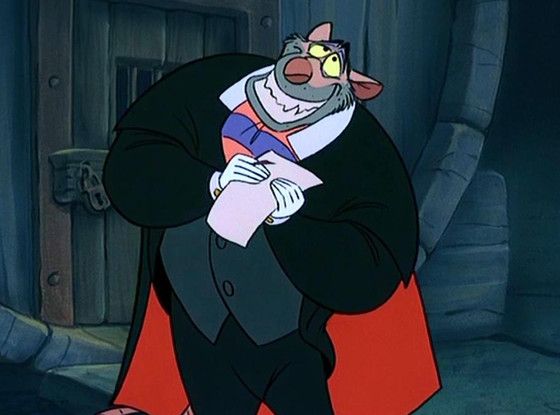



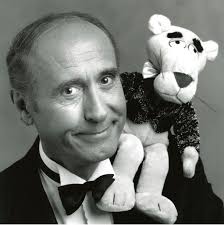
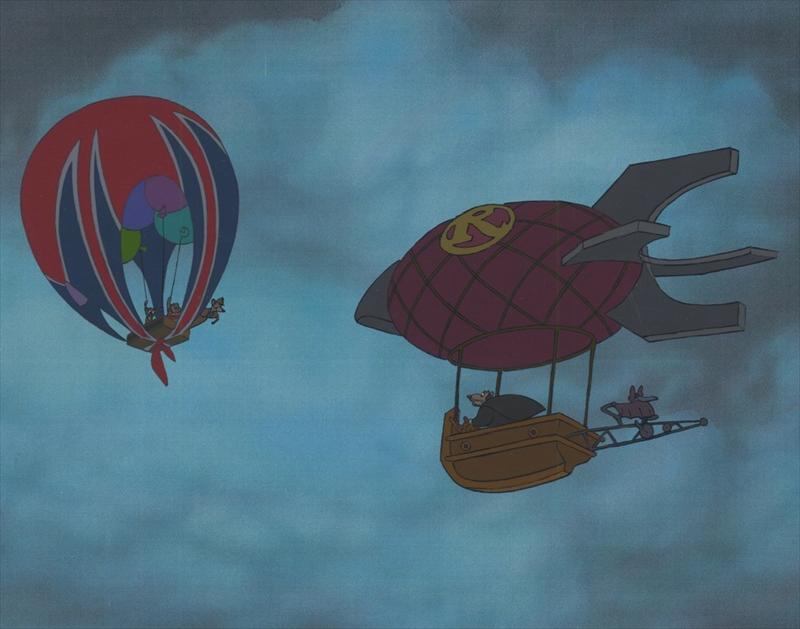

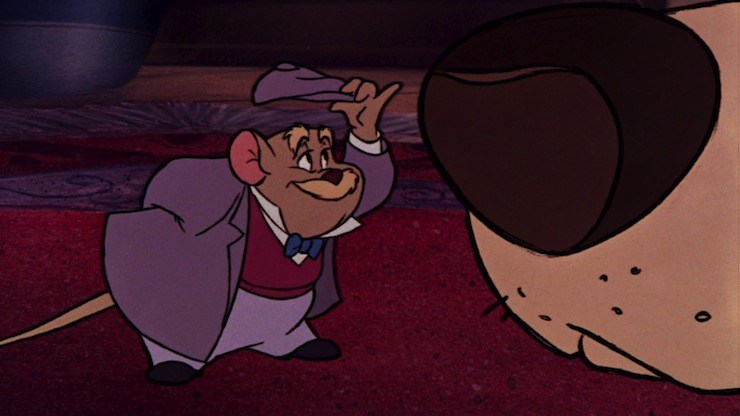
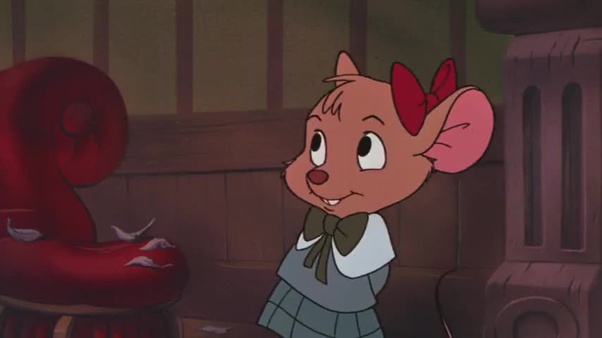

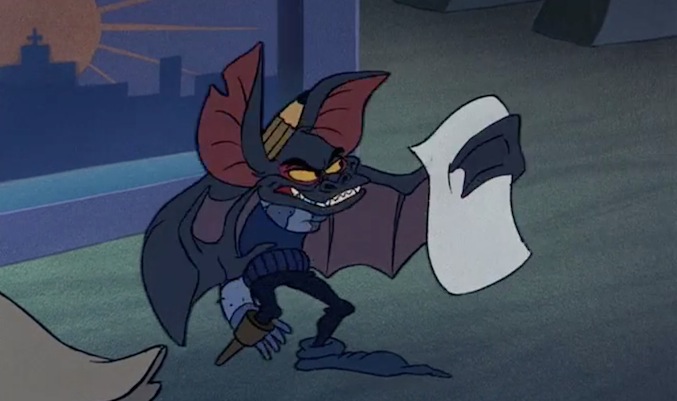
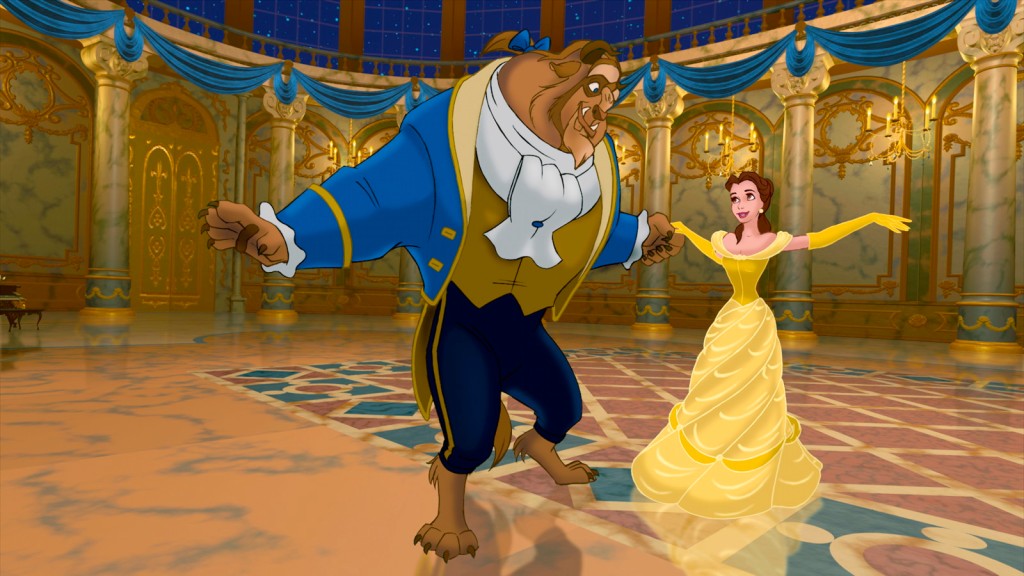
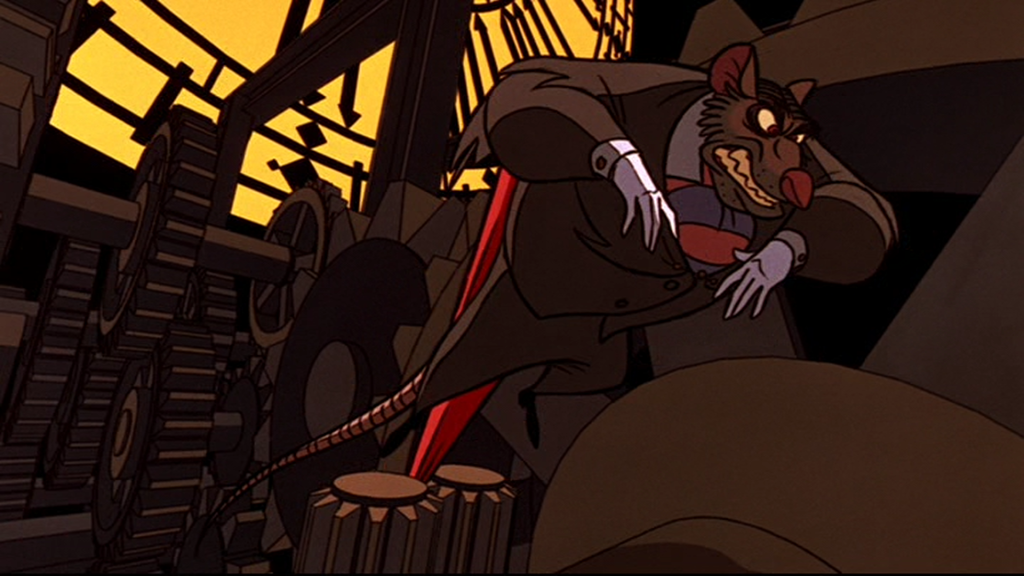



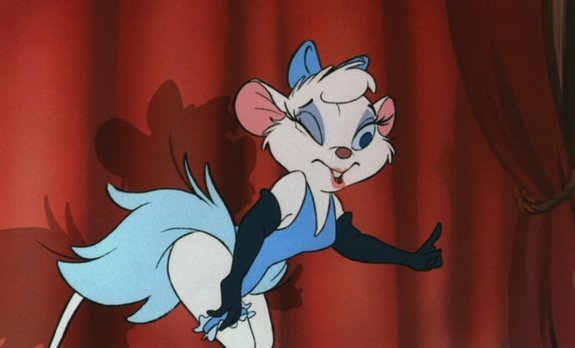
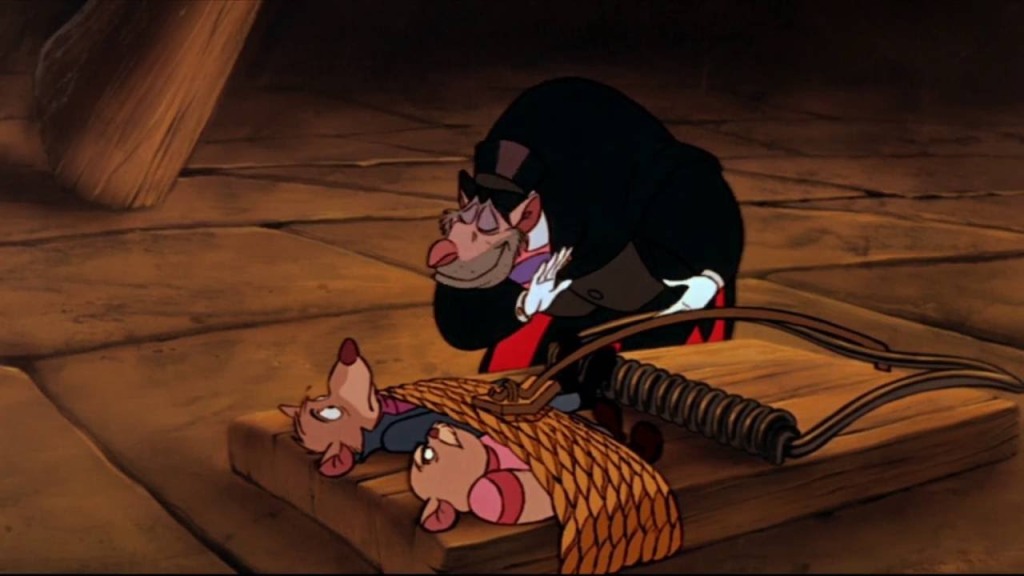
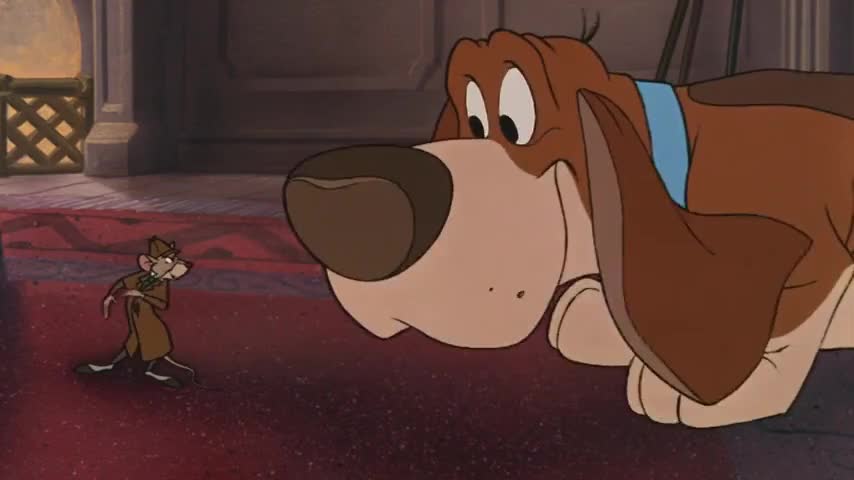

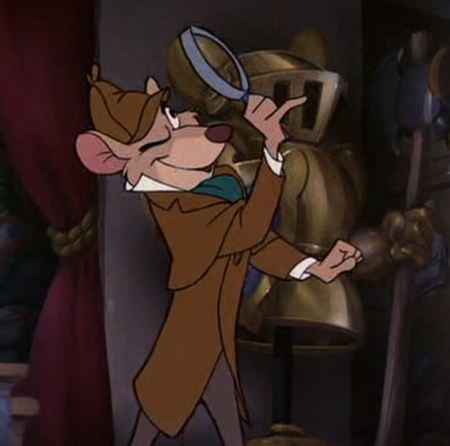

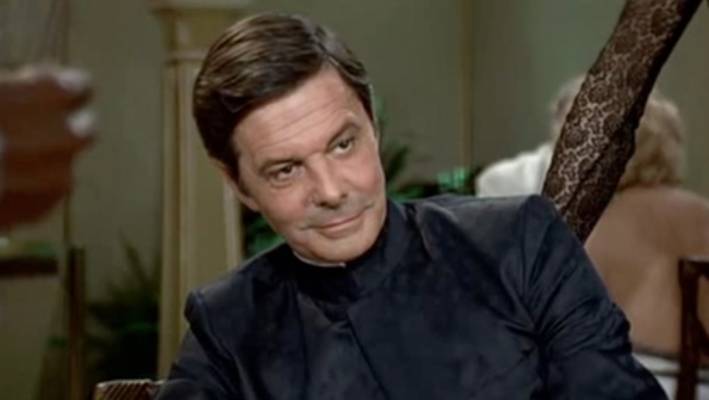


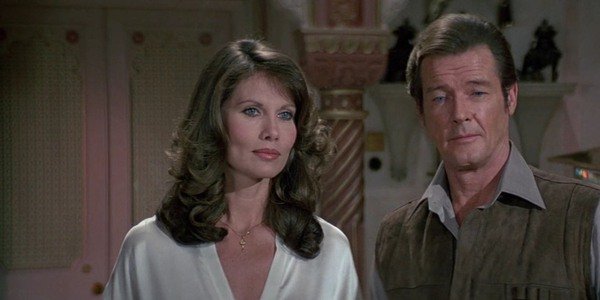


 In the Sean Connery James Bonds, 007 is often assisted by CIA counterpart Felix Leiter. The majority of Connery films take place in the United States (Goldfinger, Diamonds are Forever) or nearby (Dr. No, Thunderball) so Leiter’s presence makes sense. With Roger Moore, the action is much more worldwide, and so Leiter only appears in the first installment, Live and Let Die. Moore’s 007 had a bevy of different allies, and Octopussy gave us one of the very best.
In the Sean Connery James Bonds, 007 is often assisted by CIA counterpart Felix Leiter. The majority of Connery films take place in the United States (Goldfinger, Diamonds are Forever) or nearby (Dr. No, Thunderball) so Leiter’s presence makes sense. With Roger Moore, the action is much more worldwide, and so Leiter only appears in the first installment, Live and Let Die. Moore’s 007 had a bevy of different allies, and Octopussy gave us one of the very best.


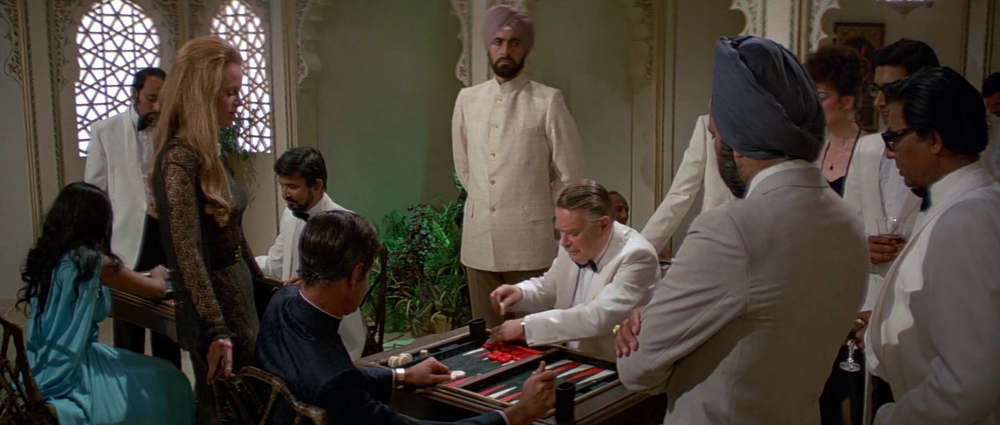

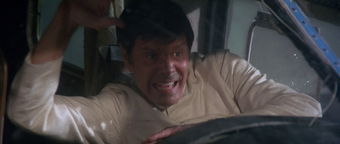
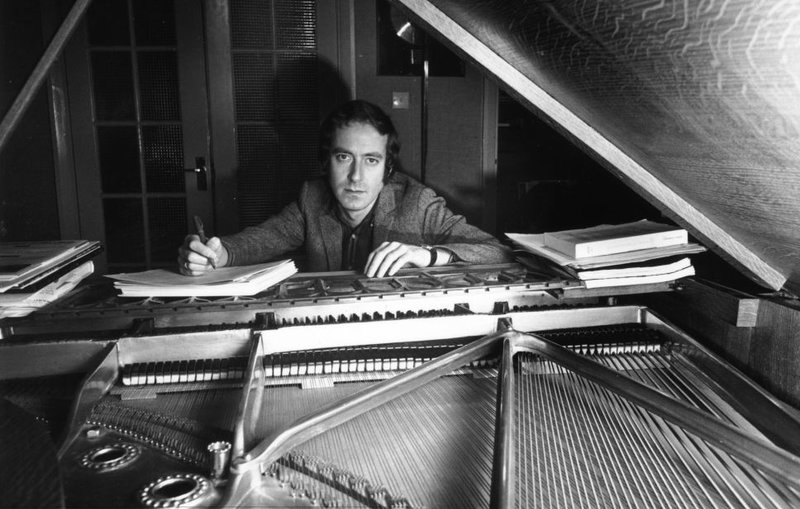
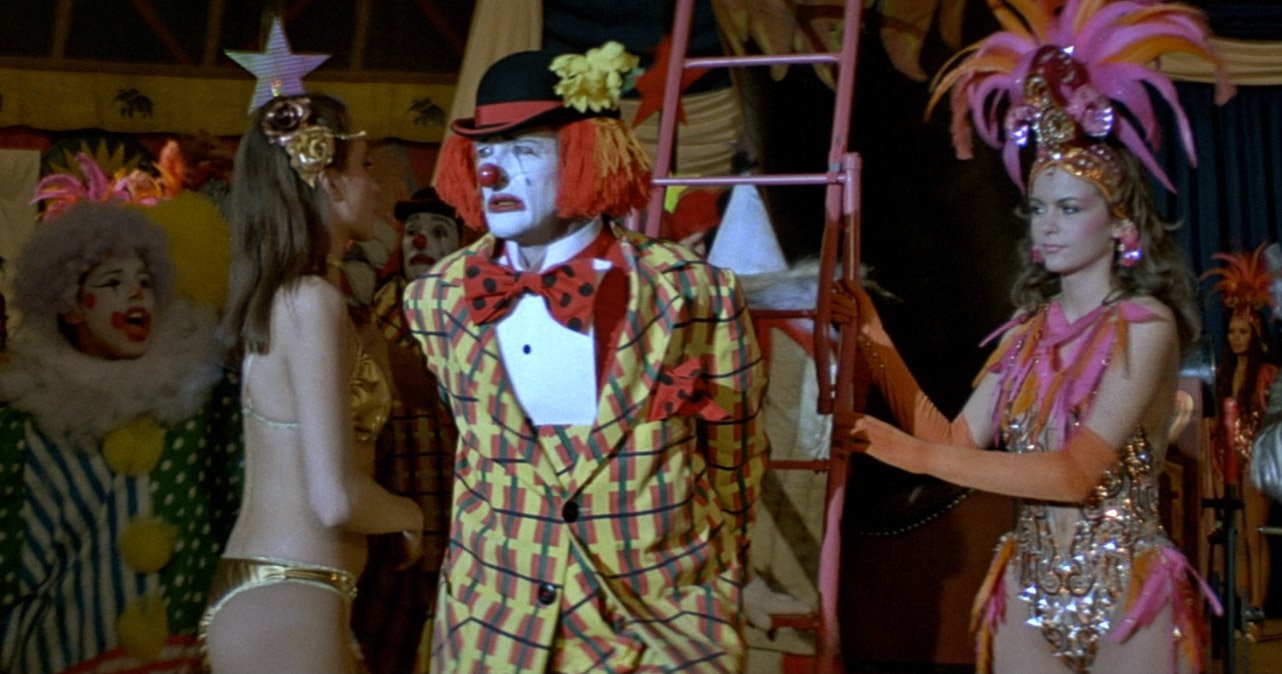

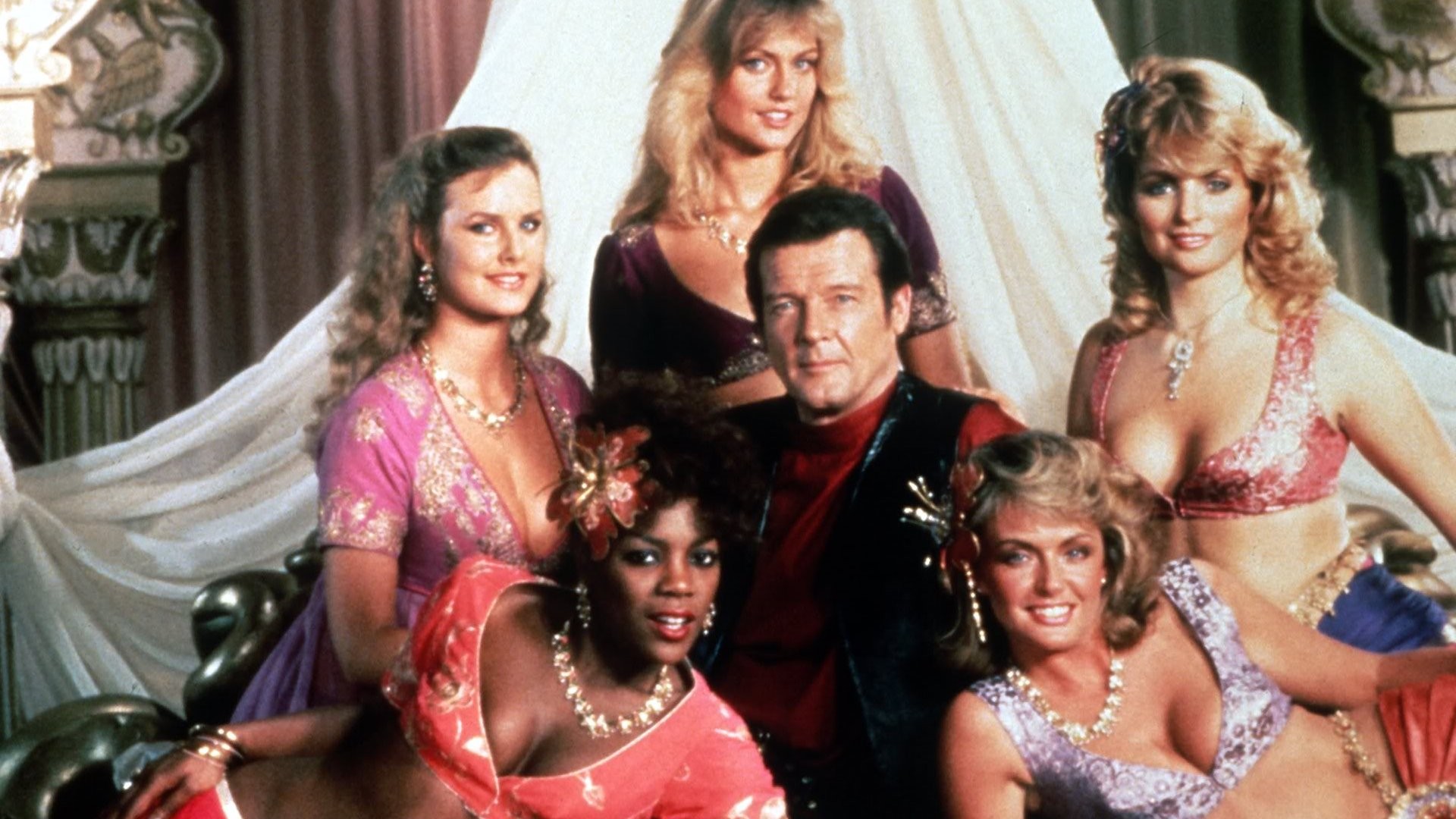

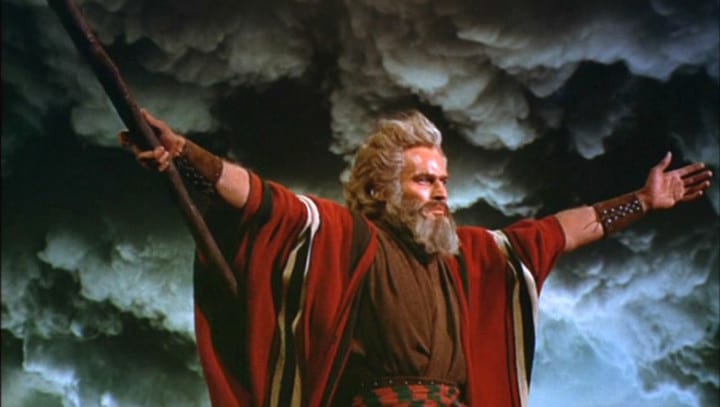

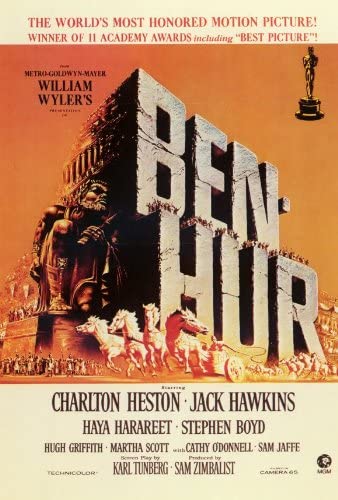
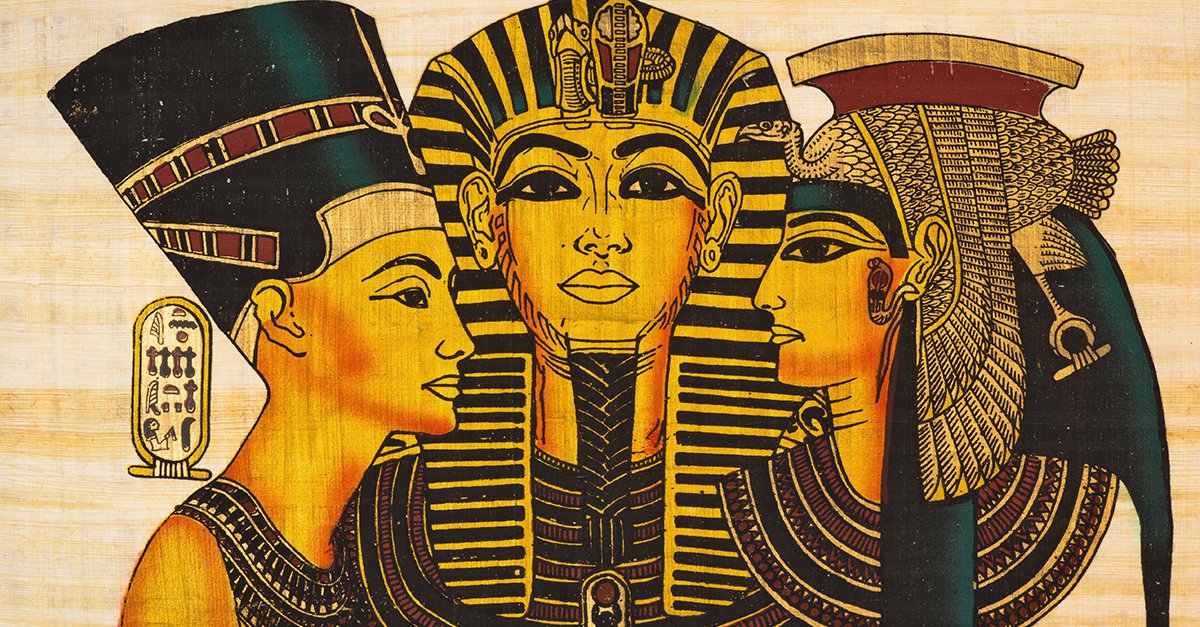

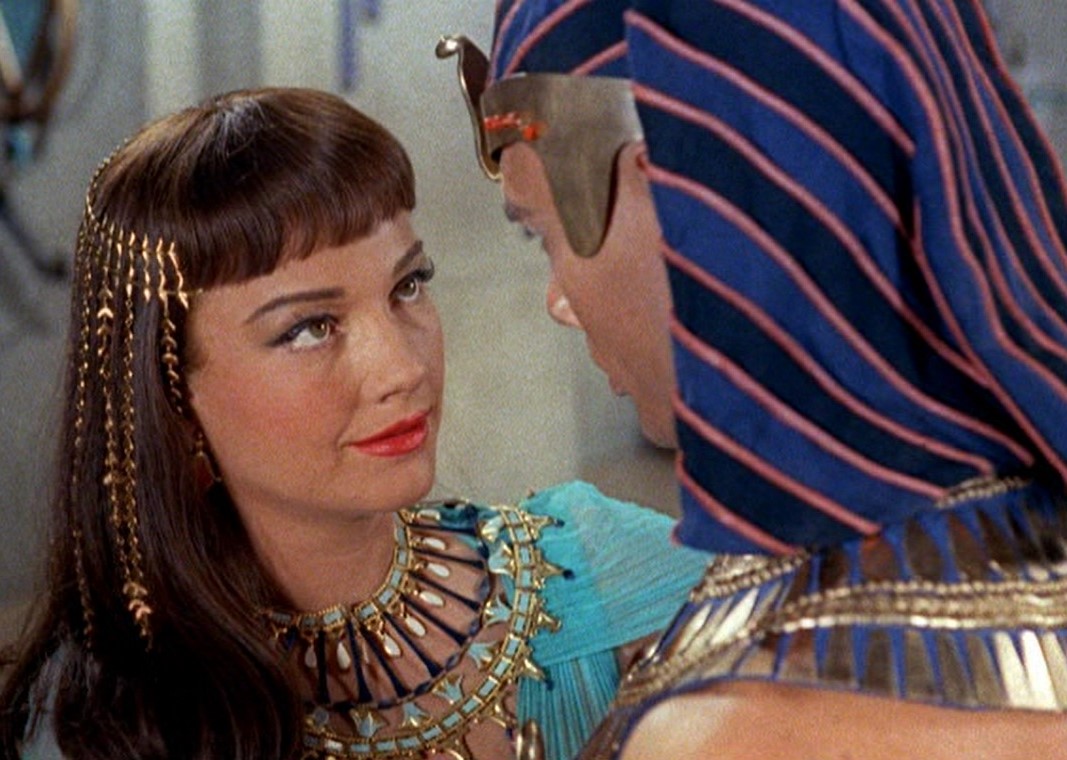
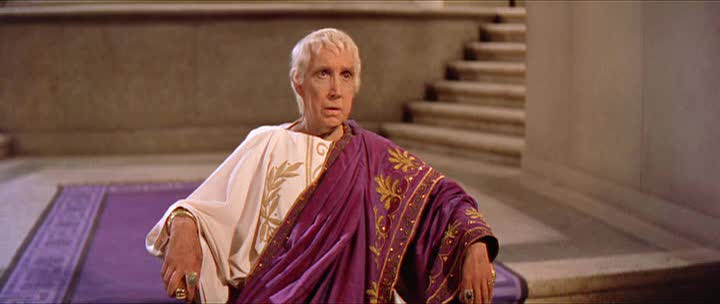

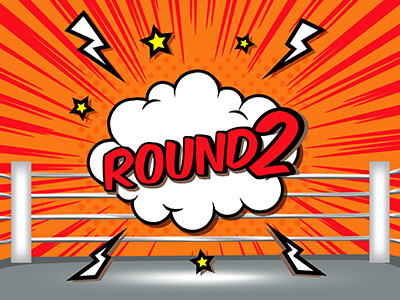


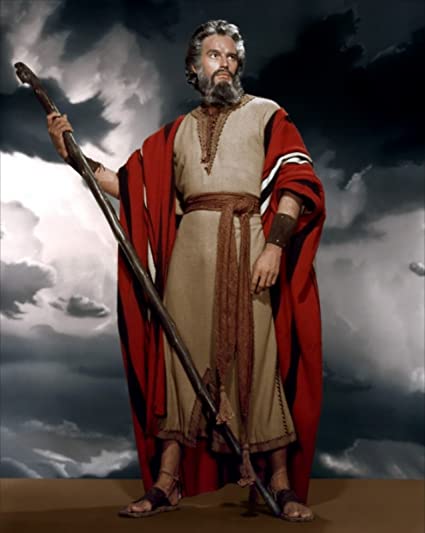

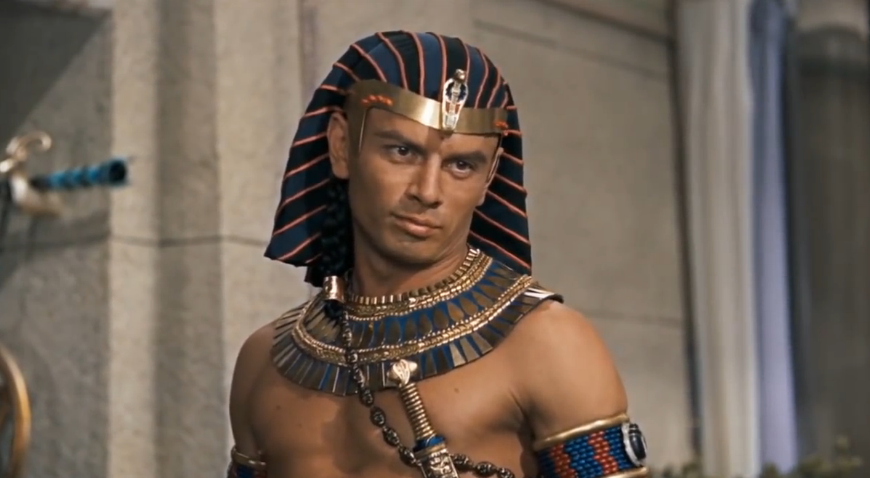 vs.
vs. 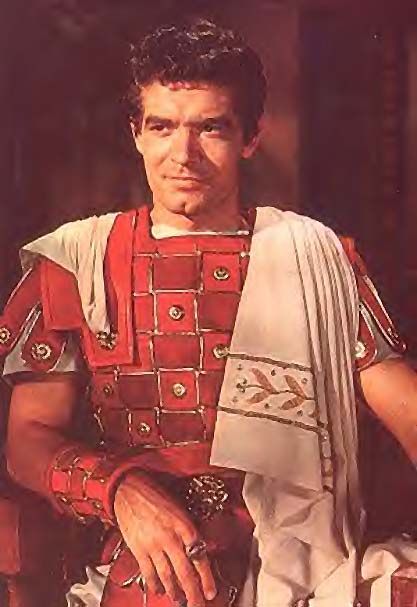

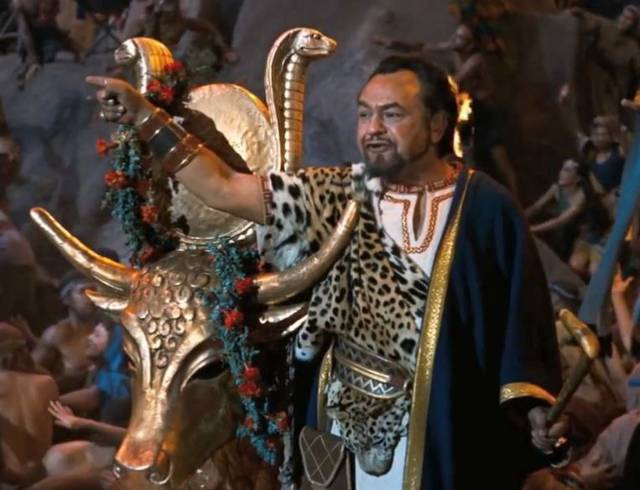
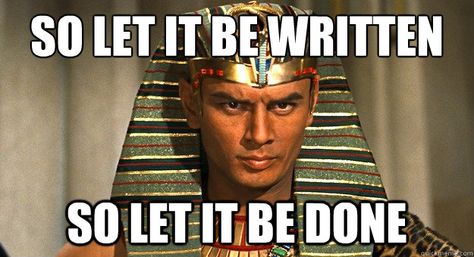



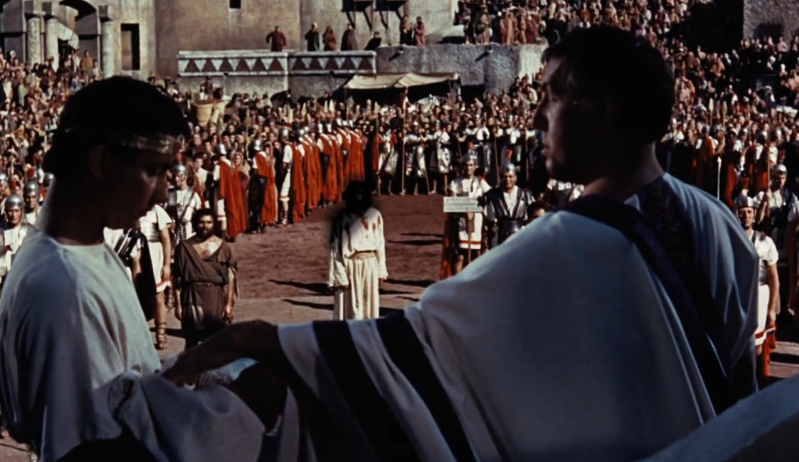
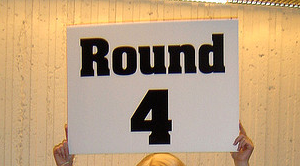


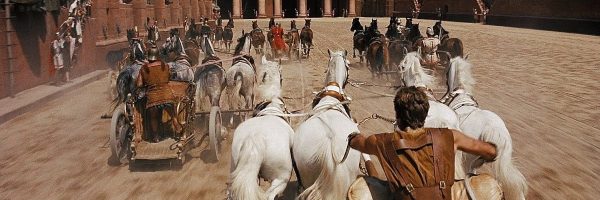
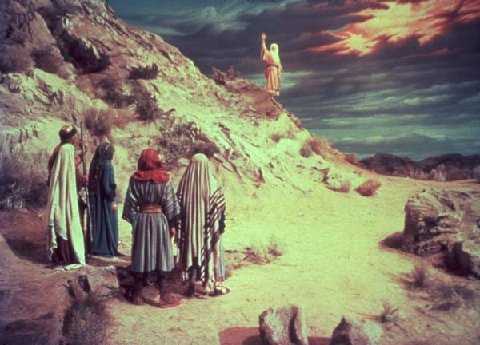

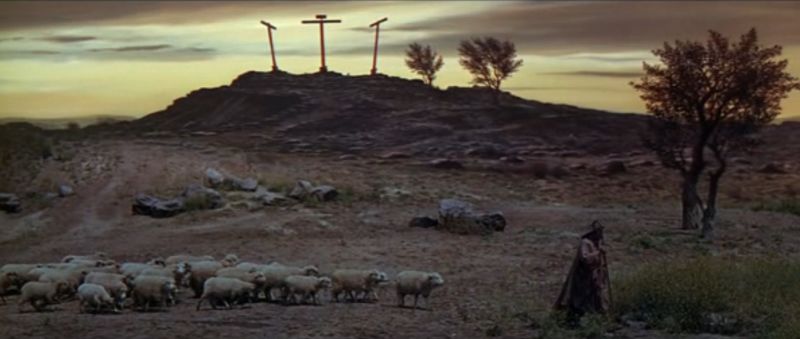
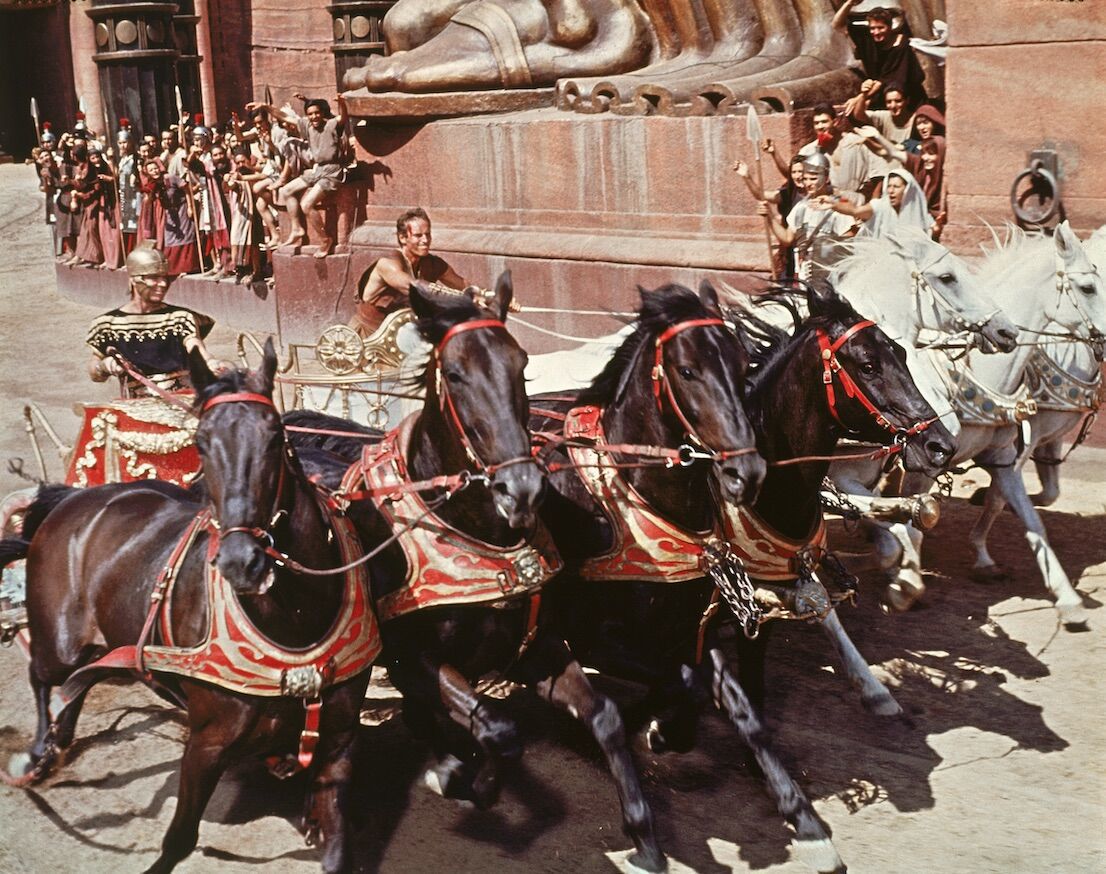




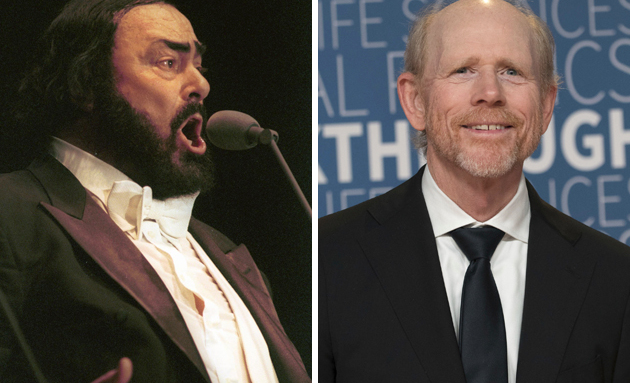
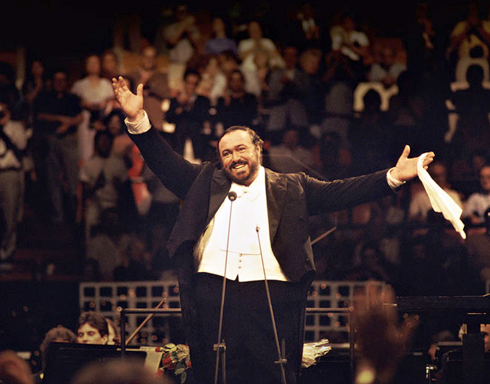
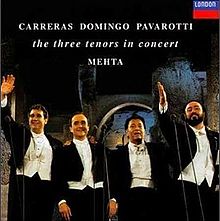
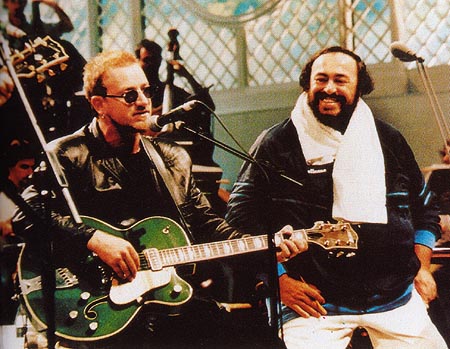
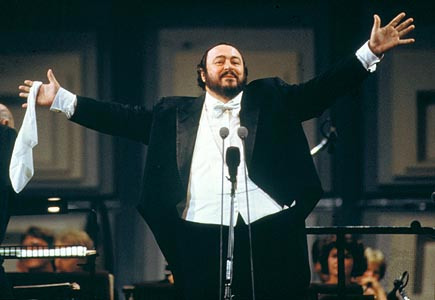
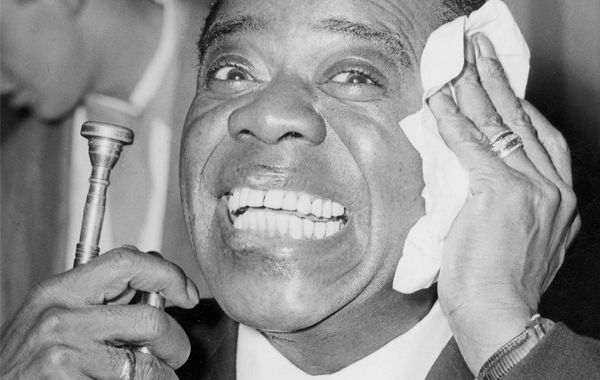

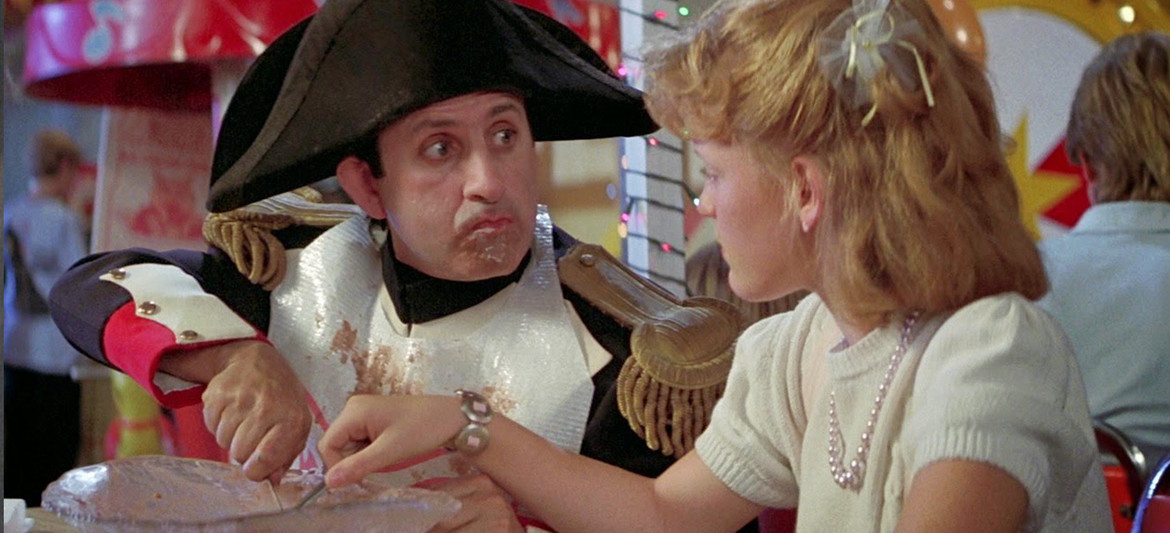

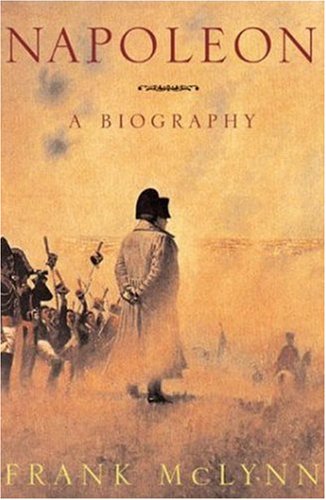

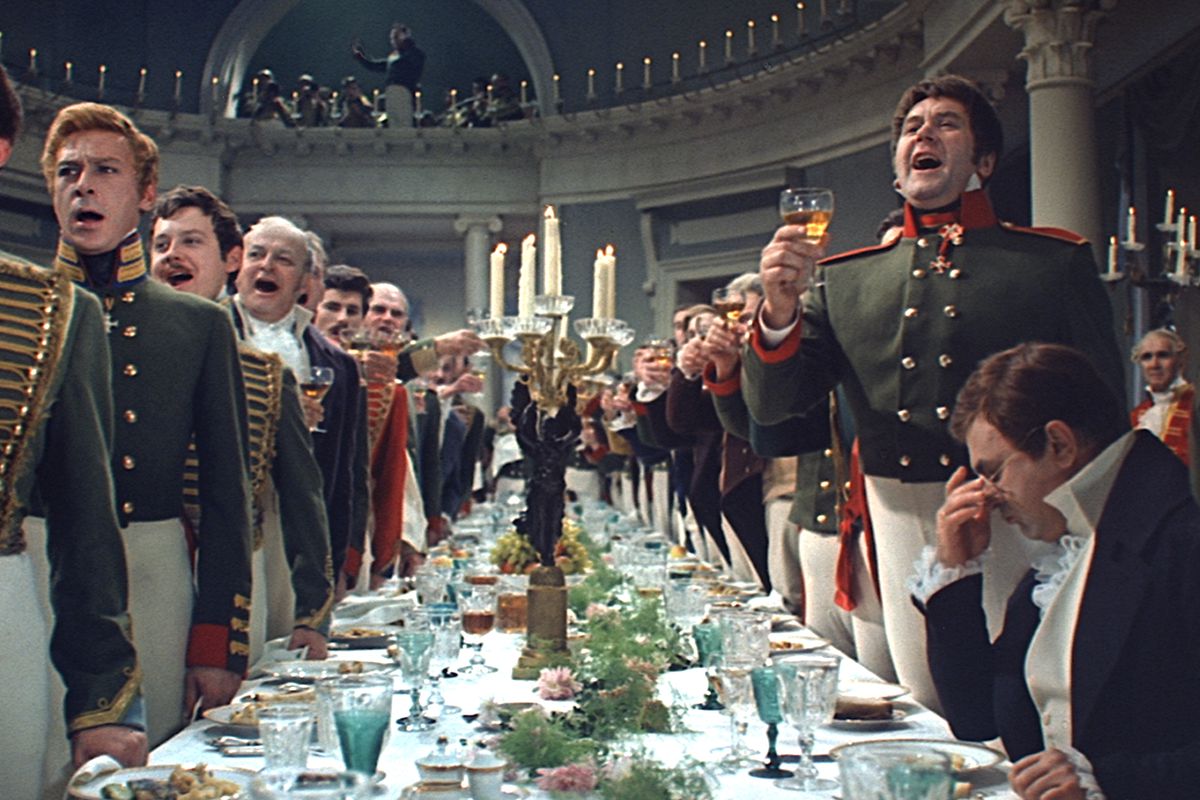
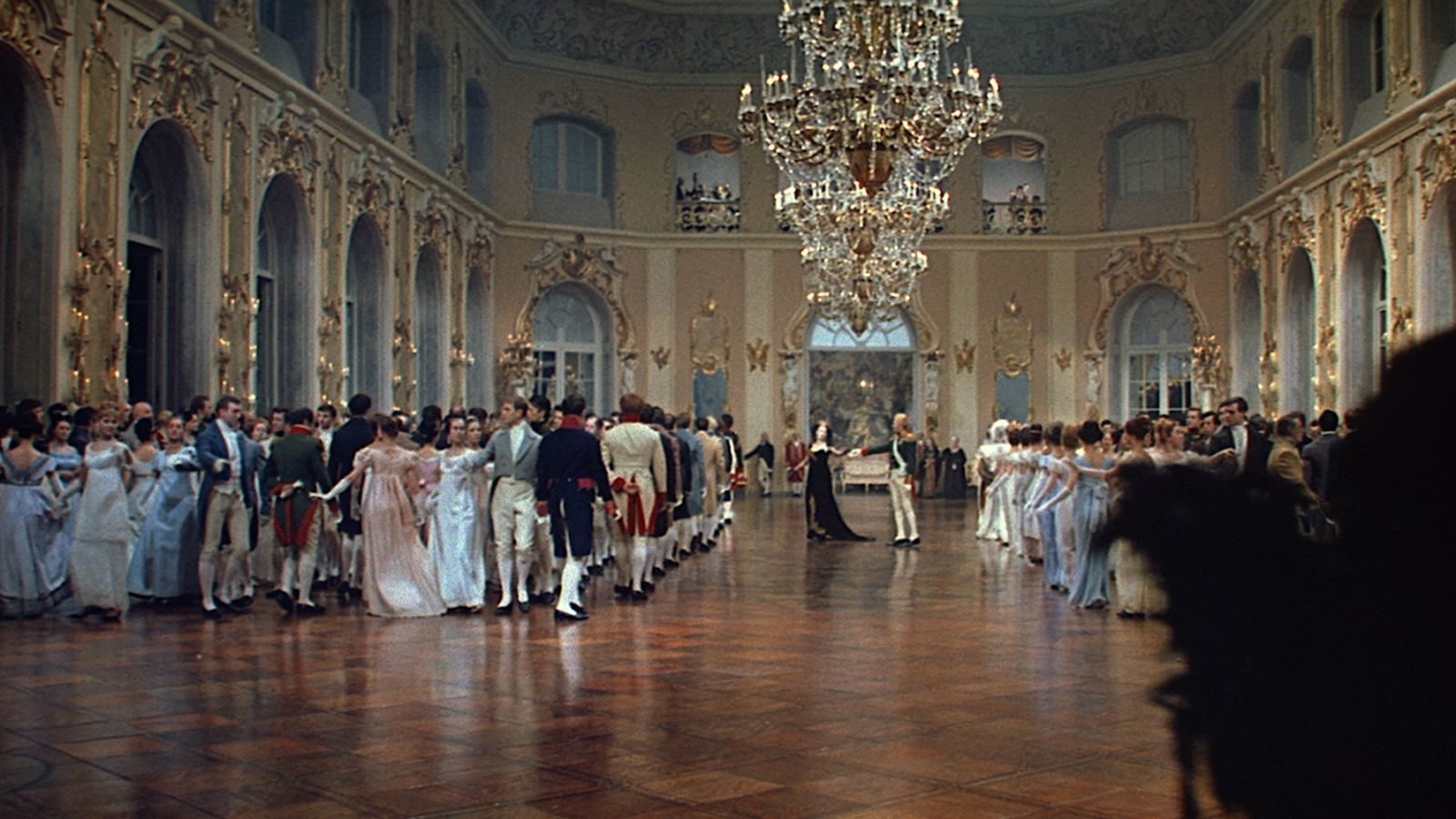
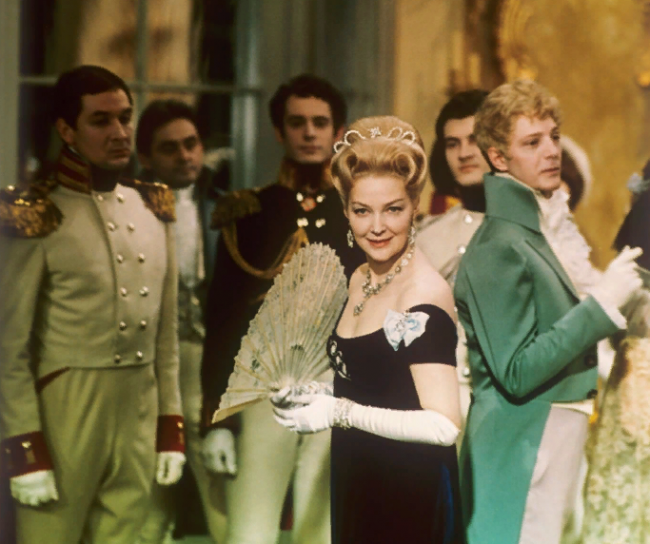
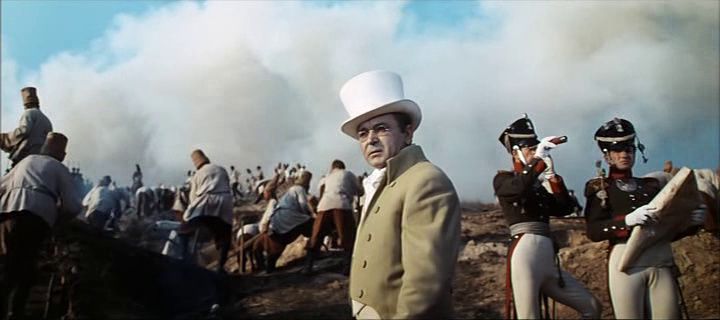
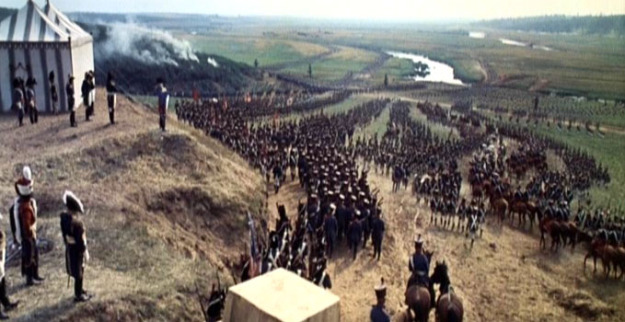
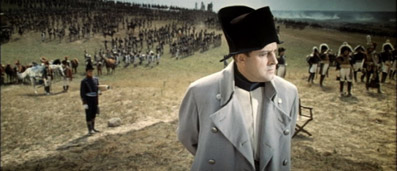
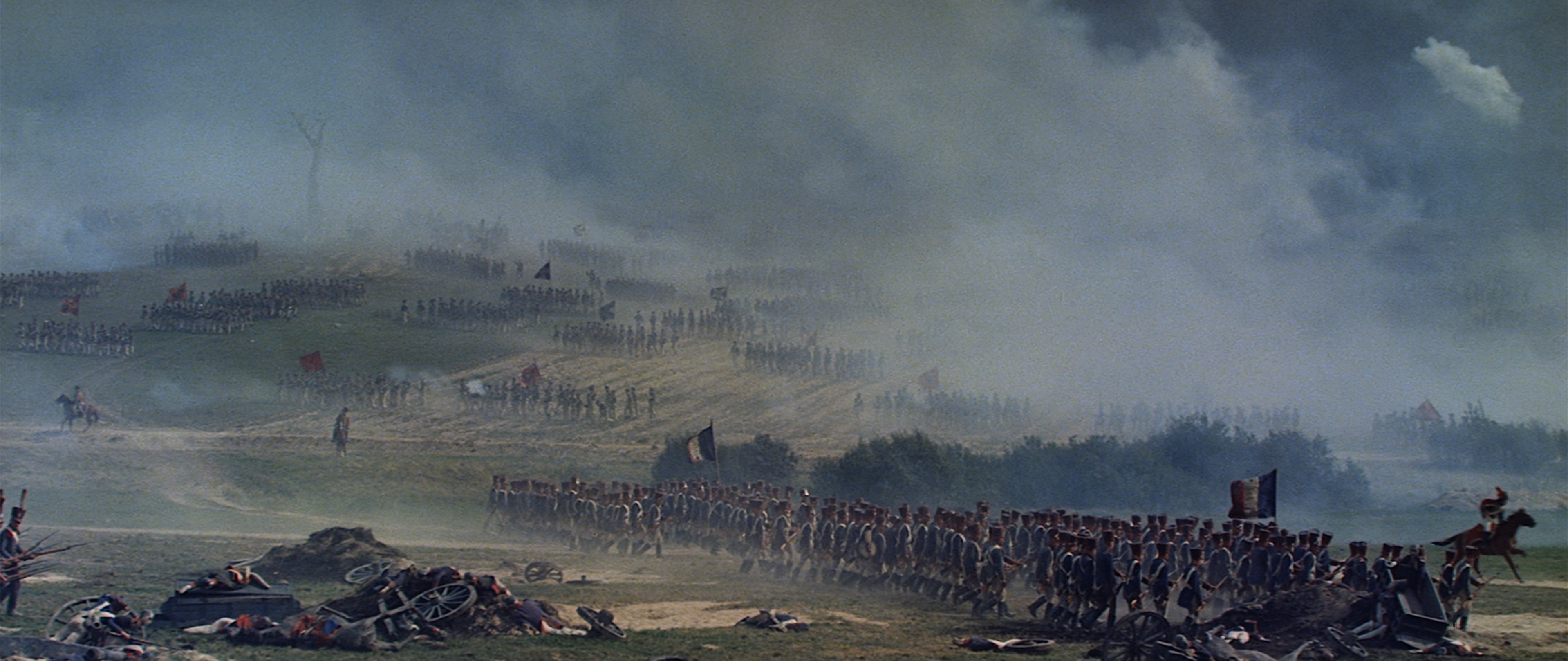
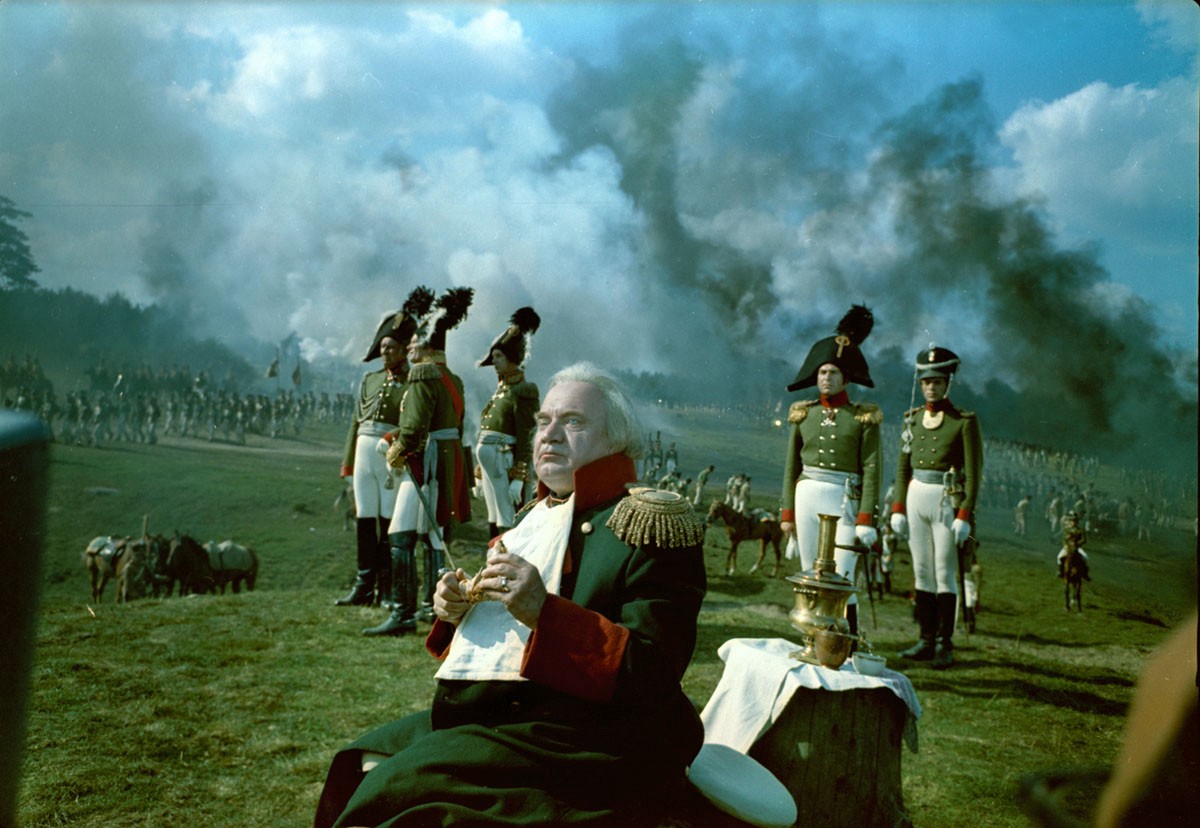
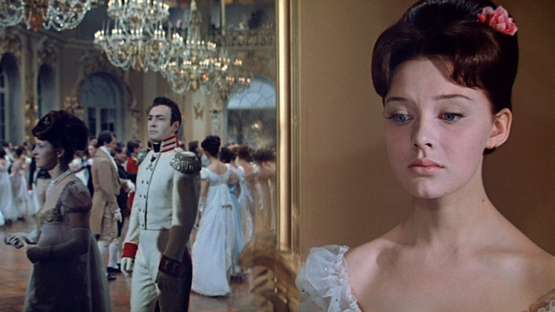


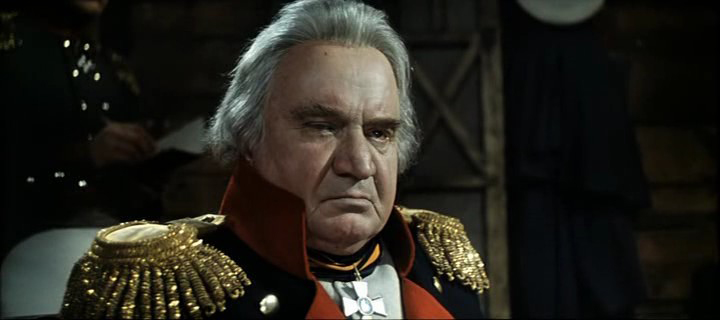


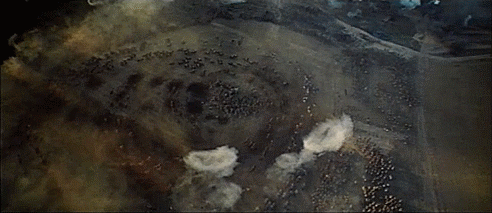

 My, 6,000 words written. Well, I am dealing with a 7 and 1/2 hour, 4 part film adaptation of a book that is over 1,400 pages long….there’s no way to be brief whenever War and Peace is involved. So what is Sergei Bondarchuk’s War and Peace? A spectacle. It’s a feast for the senses. You may not remember its dialogue, you may be confused by who the characters are (or where they went)….but you won’t forget what you saw. Or what you heard. I don’t have enough space (or time) to write about Vyacheslav Ovchinnikov’s score. Suffice it to say, no expense was spared there, either, as the credits tell us that a State Orchestra and Chorus were involved. My particular highlight was the marching tune played behind the French lines. I don’t know if it was authentic or composed for the film, but it sure was effective. The savagery of Borodino rages, while Napoleon and staff are serenading by this triumphant tune. Look out for that incoming cannon ball!
My, 6,000 words written. Well, I am dealing with a 7 and 1/2 hour, 4 part film adaptation of a book that is over 1,400 pages long….there’s no way to be brief whenever War and Peace is involved. So what is Sergei Bondarchuk’s War and Peace? A spectacle. It’s a feast for the senses. You may not remember its dialogue, you may be confused by who the characters are (or where they went)….but you won’t forget what you saw. Or what you heard. I don’t have enough space (or time) to write about Vyacheslav Ovchinnikov’s score. Suffice it to say, no expense was spared there, either, as the credits tell us that a State Orchestra and Chorus were involved. My particular highlight was the marching tune played behind the French lines. I don’t know if it was authentic or composed for the film, but it sure was effective. The savagery of Borodino rages, while Napoleon and staff are serenading by this triumphant tune. Look out for that incoming cannon ball!
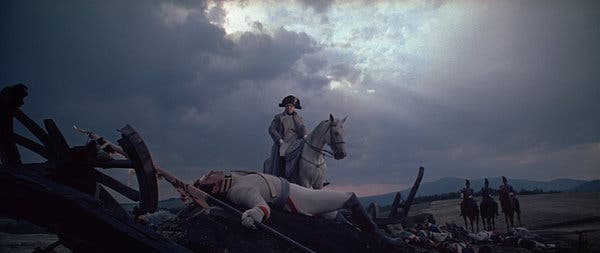
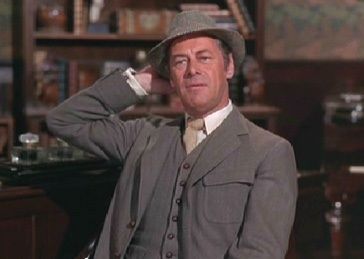
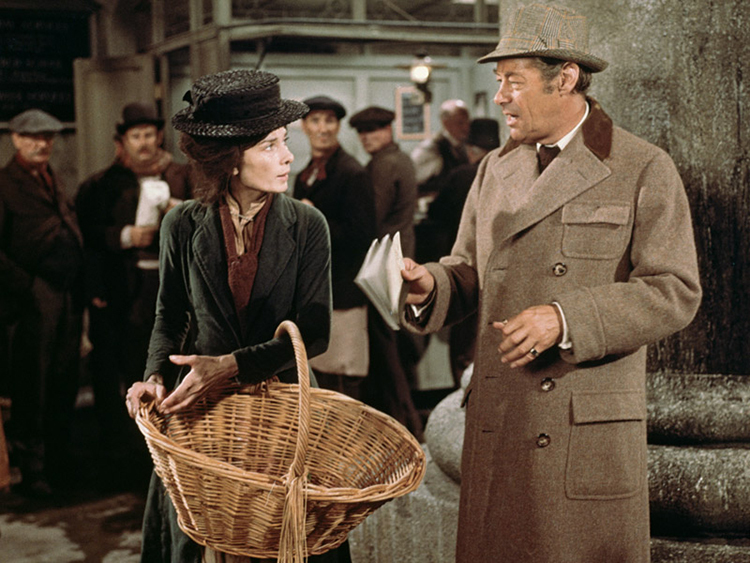
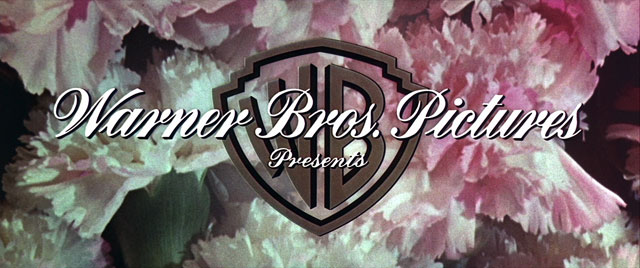

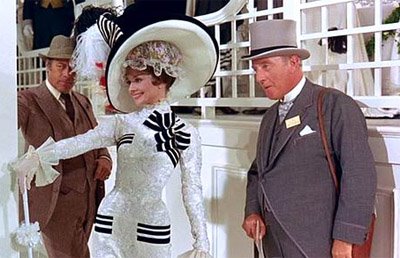
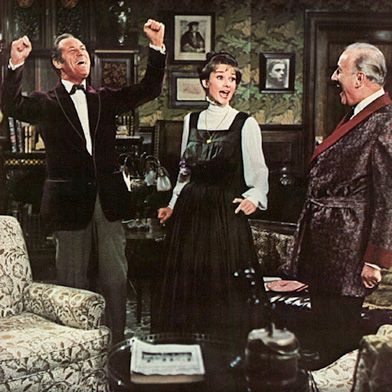
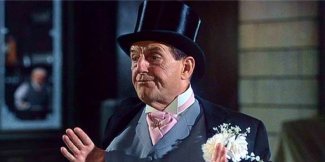

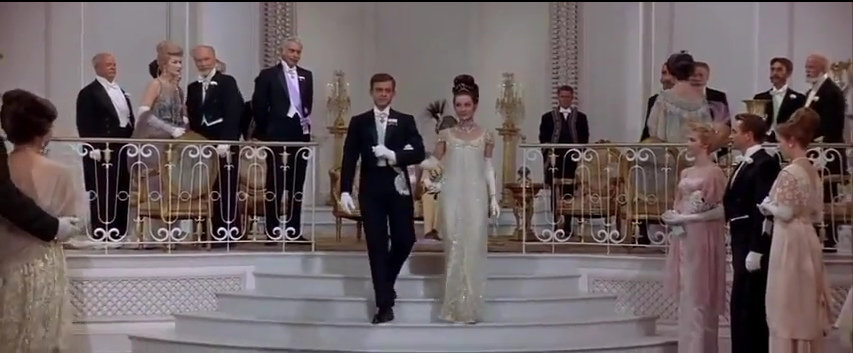

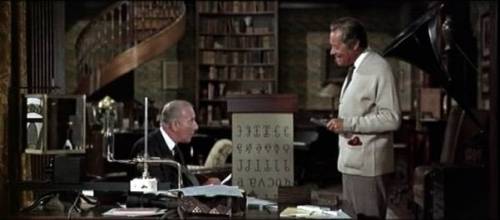
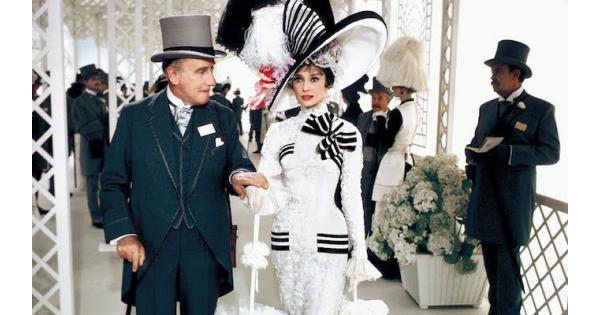
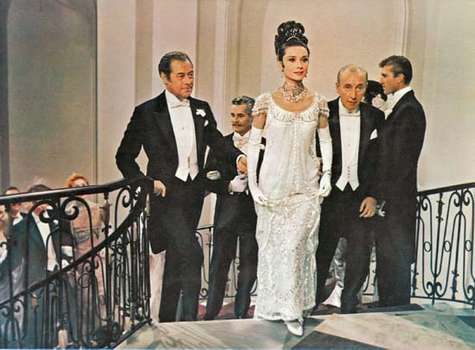
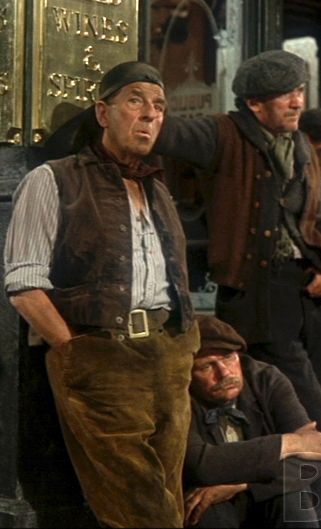
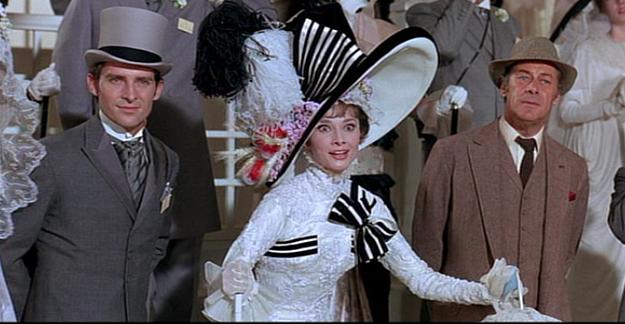


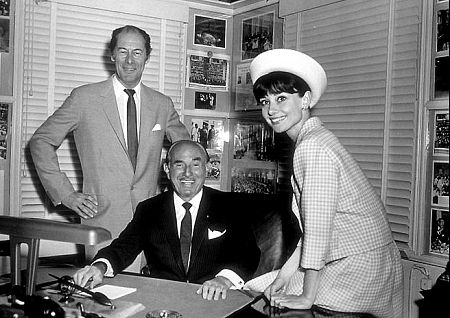
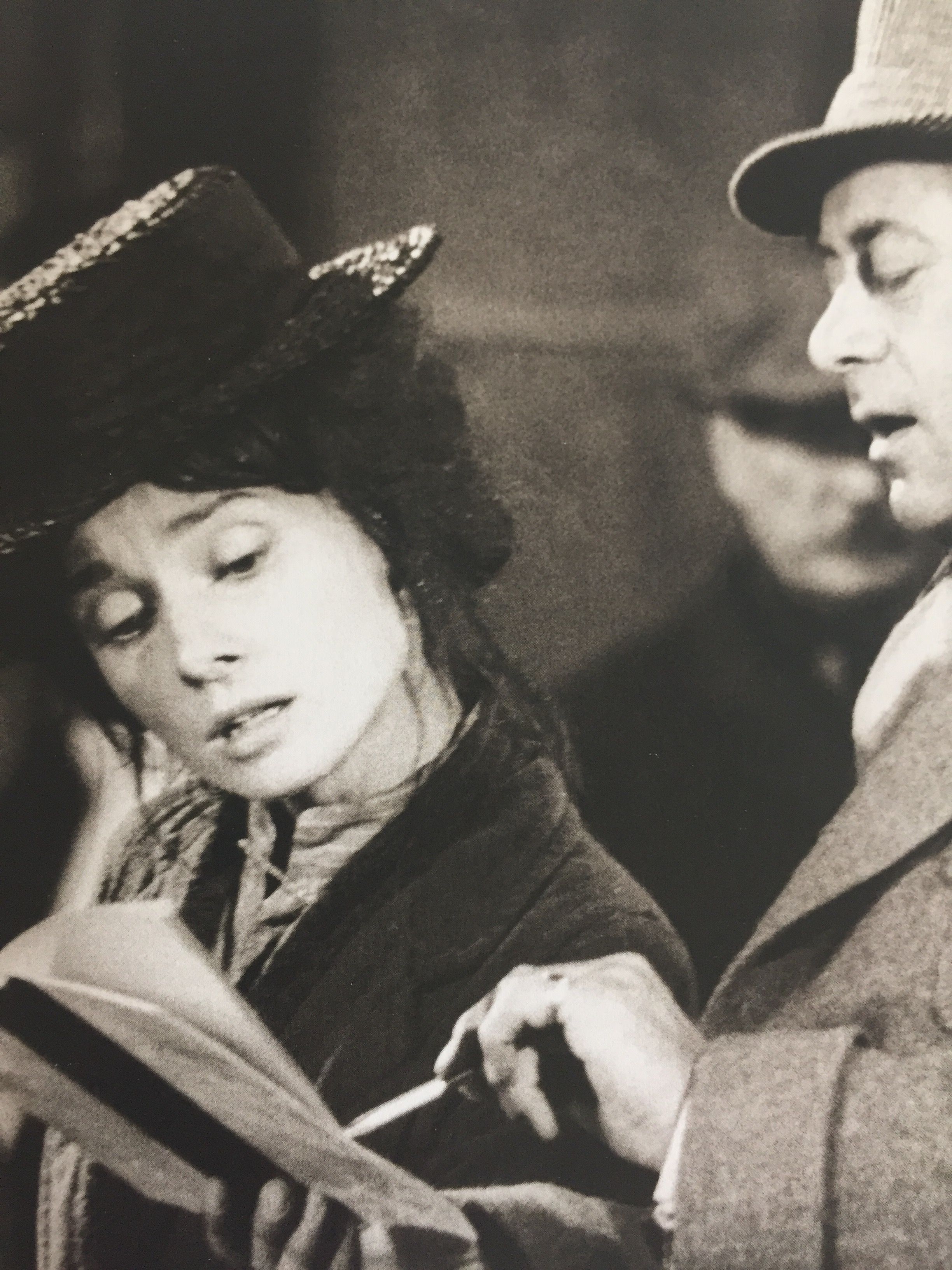
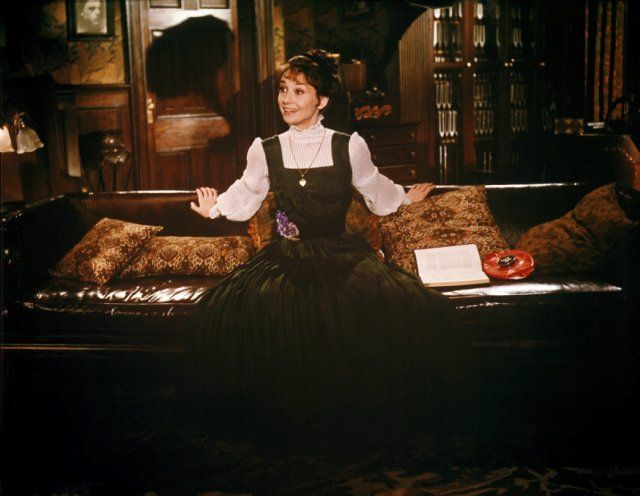


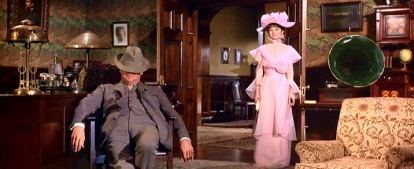


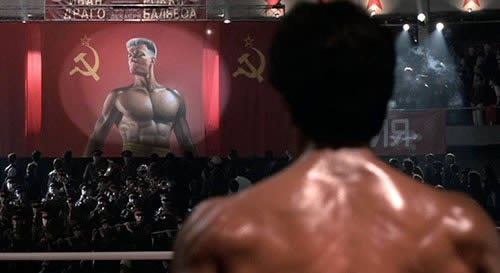

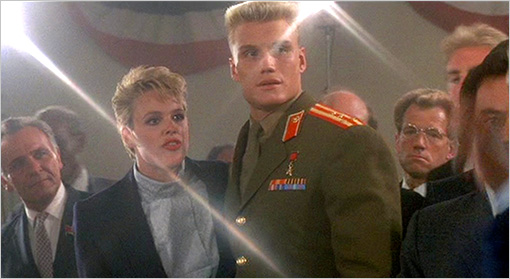
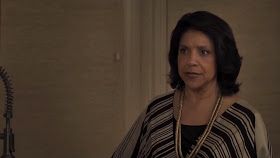
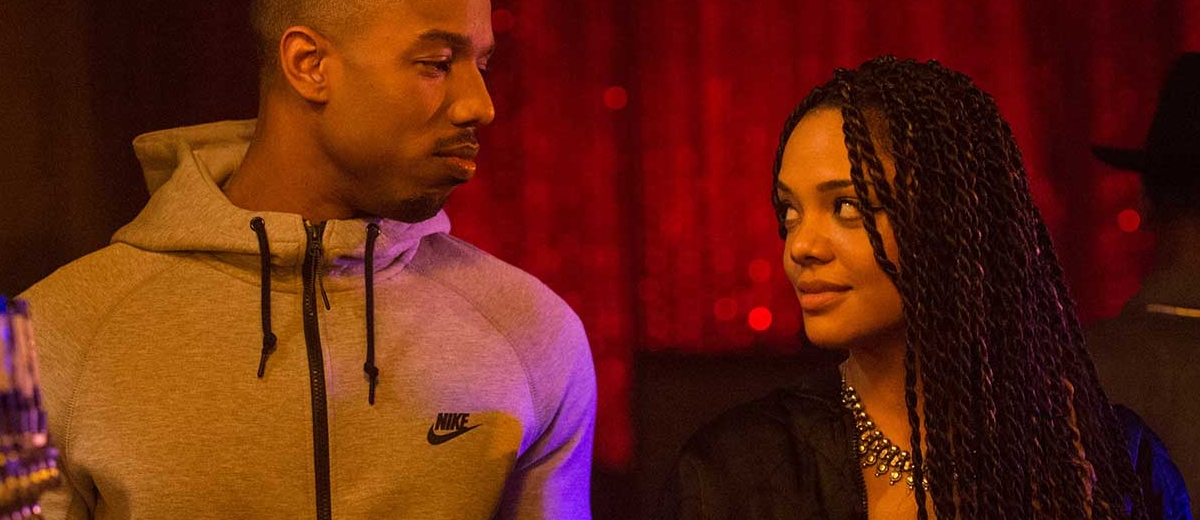
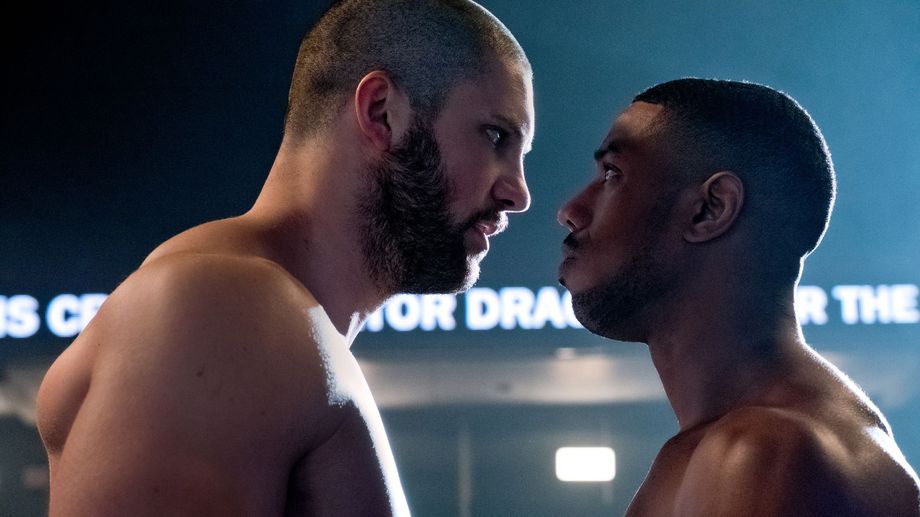
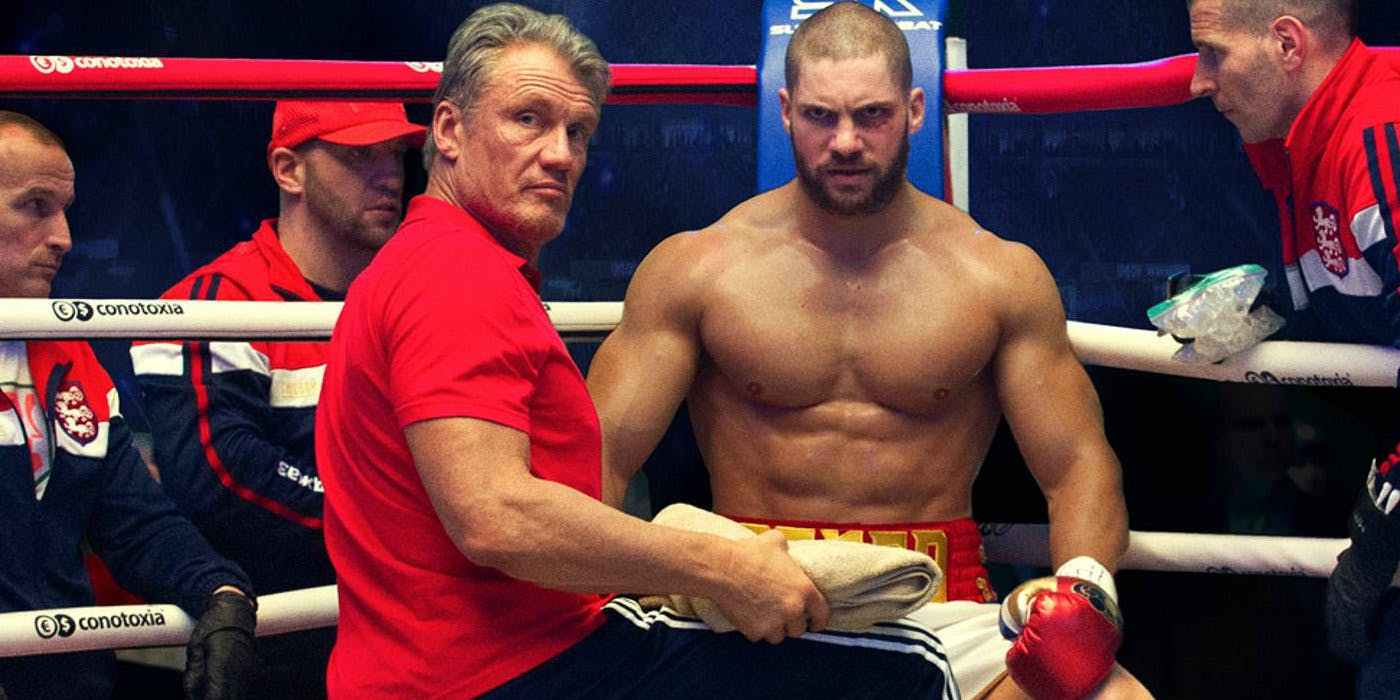

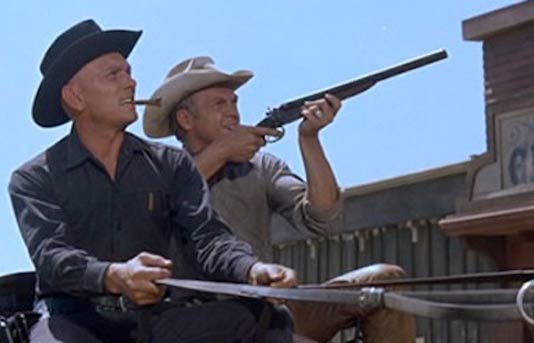


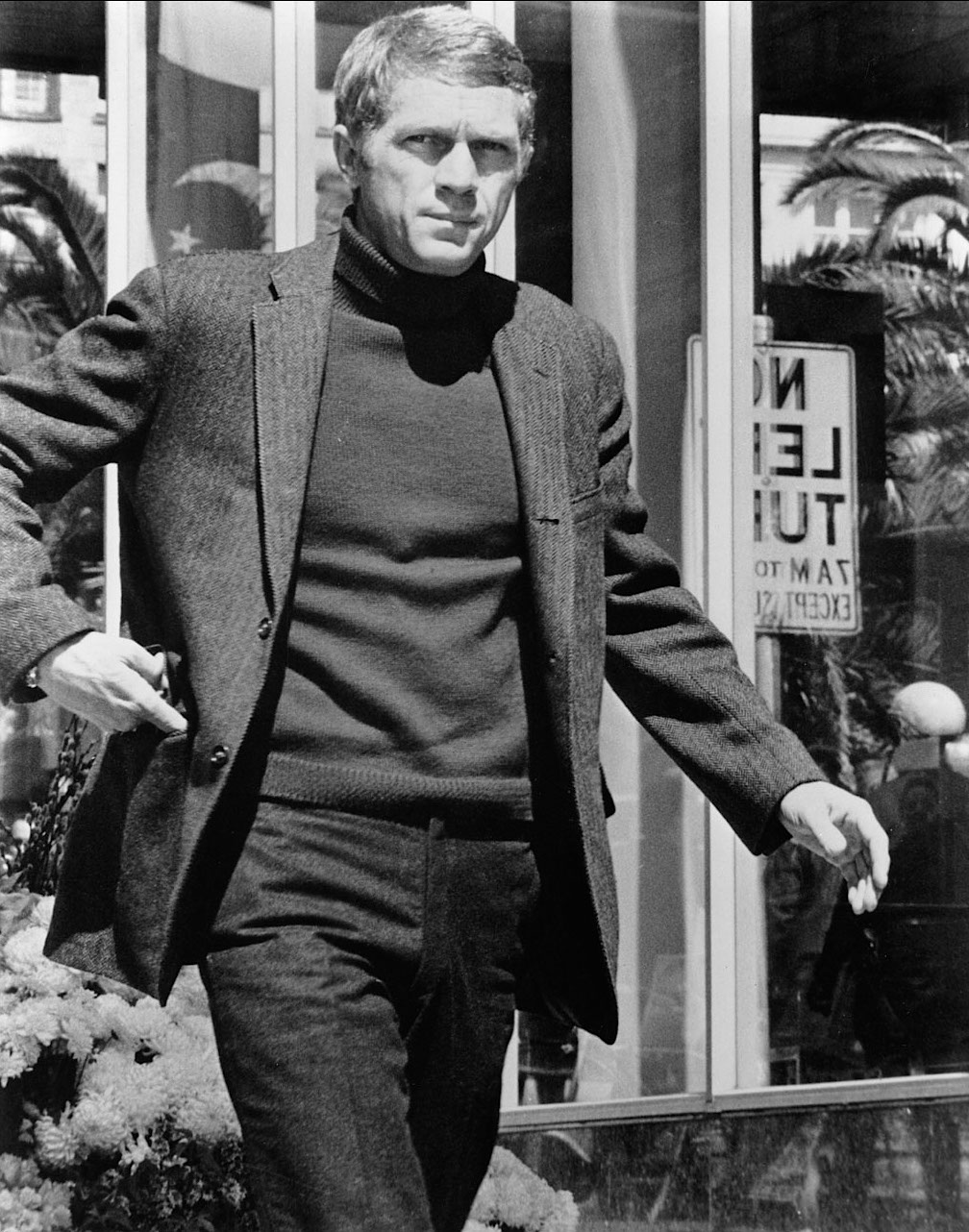
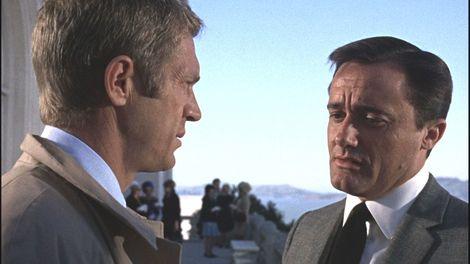
 Like I said, Bullitt is more than a car chase….but let’s face it, it is pretty much the most spectacular vehicle scene ever filmed. Indiana Jones’ taking over the Nazi convoy in Raiders of the Lost Ark is also in contention but that’s an entirely different blog. Between director Yates or McQueen, you wonder who was in charge here. The pacing is perfect; it comes just about halfway through the film. We’ve set the stage: the Bullitt unit is set up to protect Ross and something goes wrong; there’s misdirections at the hospital, between Chalmers trying to get involved and the “professional” on hand; Bullitt has gone on a trip across the city (thanks to not-yet-famous Robert Duvall as his cab driver) and met up with his informer; Chalmers is working against Bullitt. The plot is well in motion, but rather than keep that developing, it’s time to take up 11 minutes of screen time with something utterly unbelievable and unquestionably awesome.
Like I said, Bullitt is more than a car chase….but let’s face it, it is pretty much the most spectacular vehicle scene ever filmed. Indiana Jones’ taking over the Nazi convoy in Raiders of the Lost Ark is also in contention but that’s an entirely different blog. Between director Yates or McQueen, you wonder who was in charge here. The pacing is perfect; it comes just about halfway through the film. We’ve set the stage: the Bullitt unit is set up to protect Ross and something goes wrong; there’s misdirections at the hospital, between Chalmers trying to get involved and the “professional” on hand; Bullitt has gone on a trip across the city (thanks to not-yet-famous Robert Duvall as his cab driver) and met up with his informer; Chalmers is working against Bullitt. The plot is well in motion, but rather than keep that developing, it’s time to take up 11 minutes of screen time with something utterly unbelievable and unquestionably awesome.